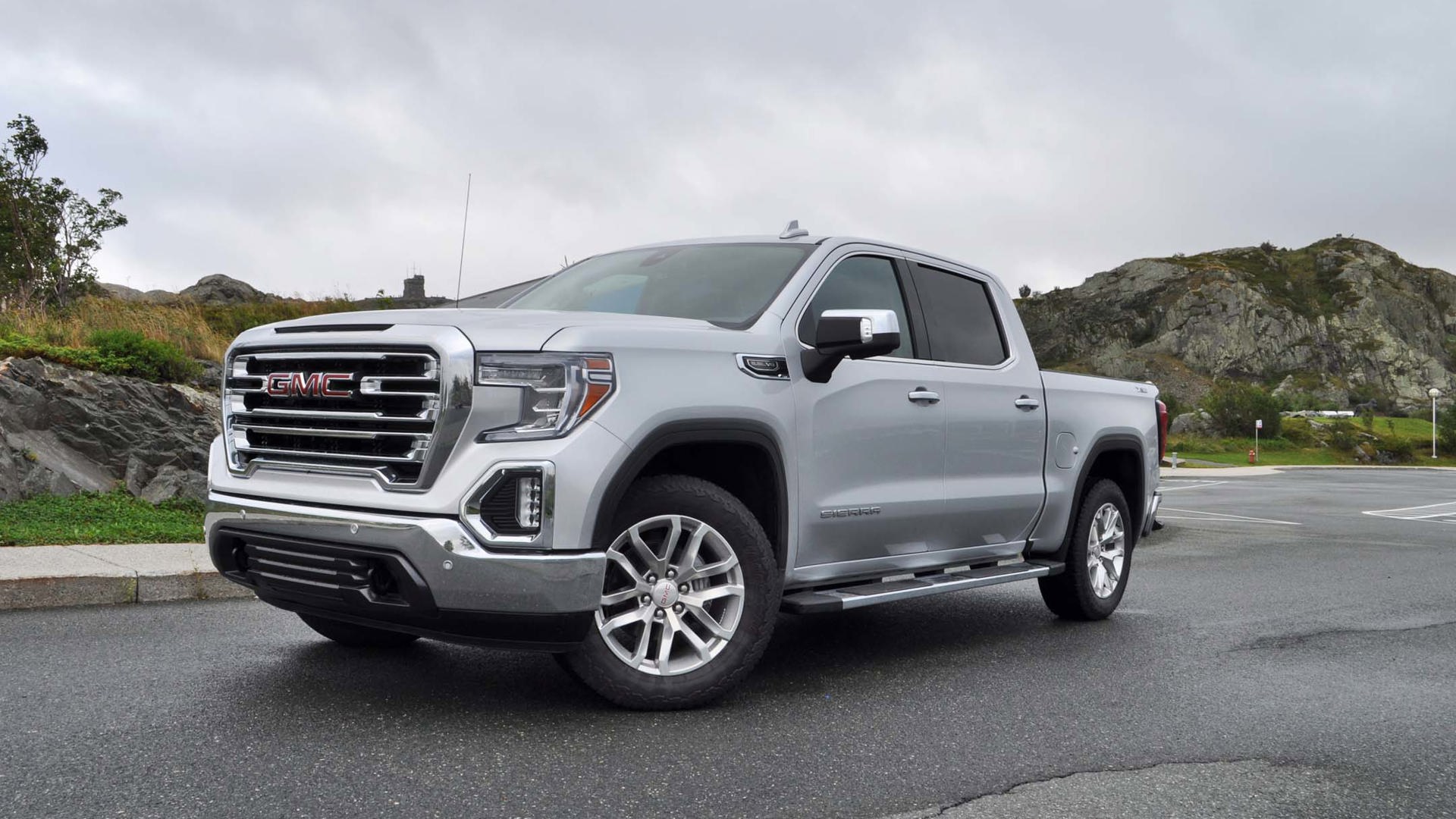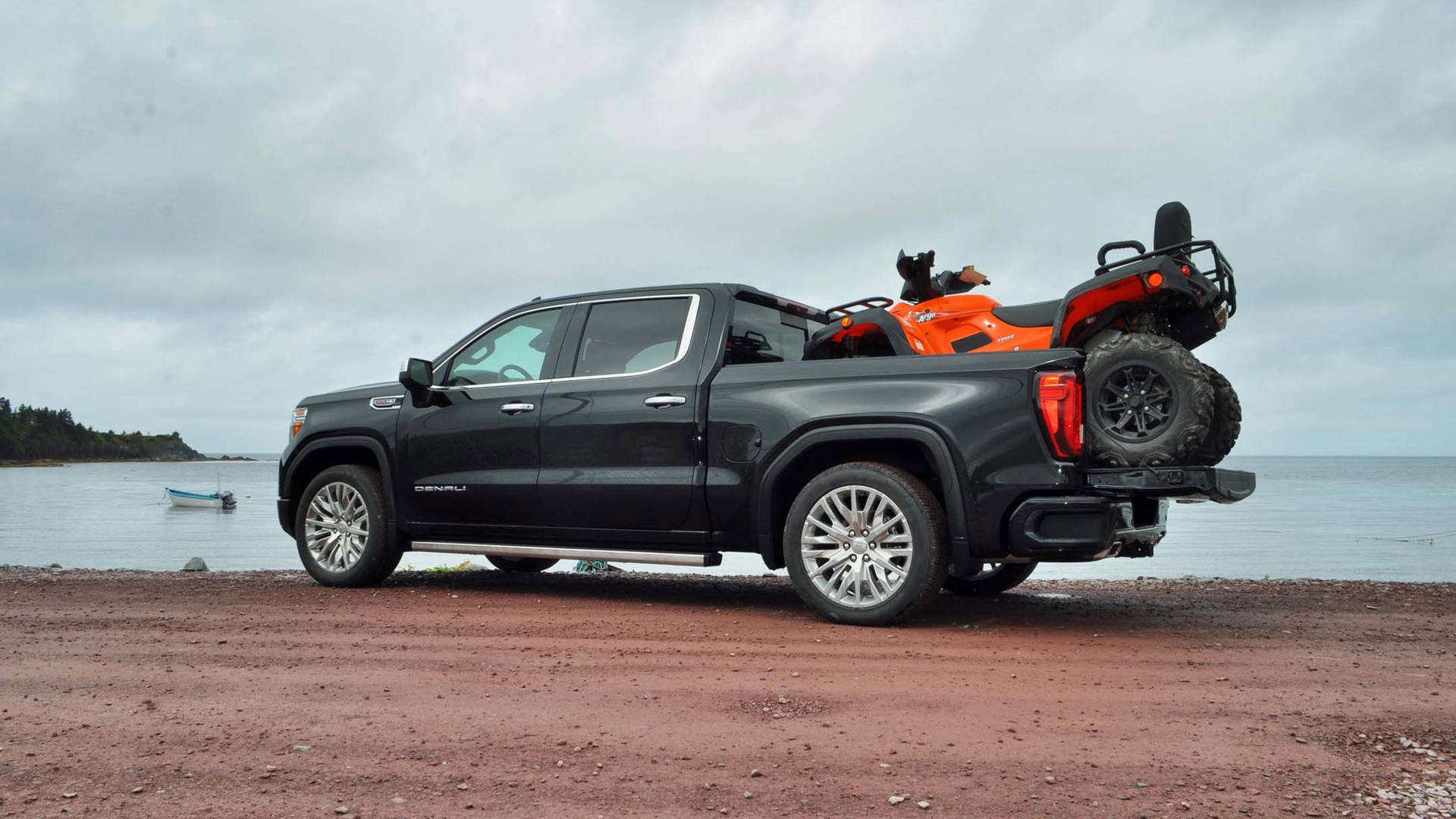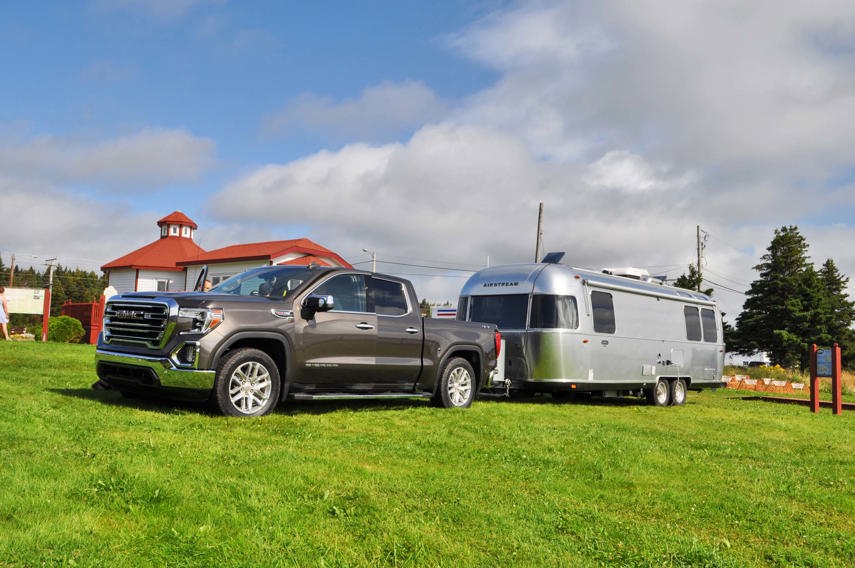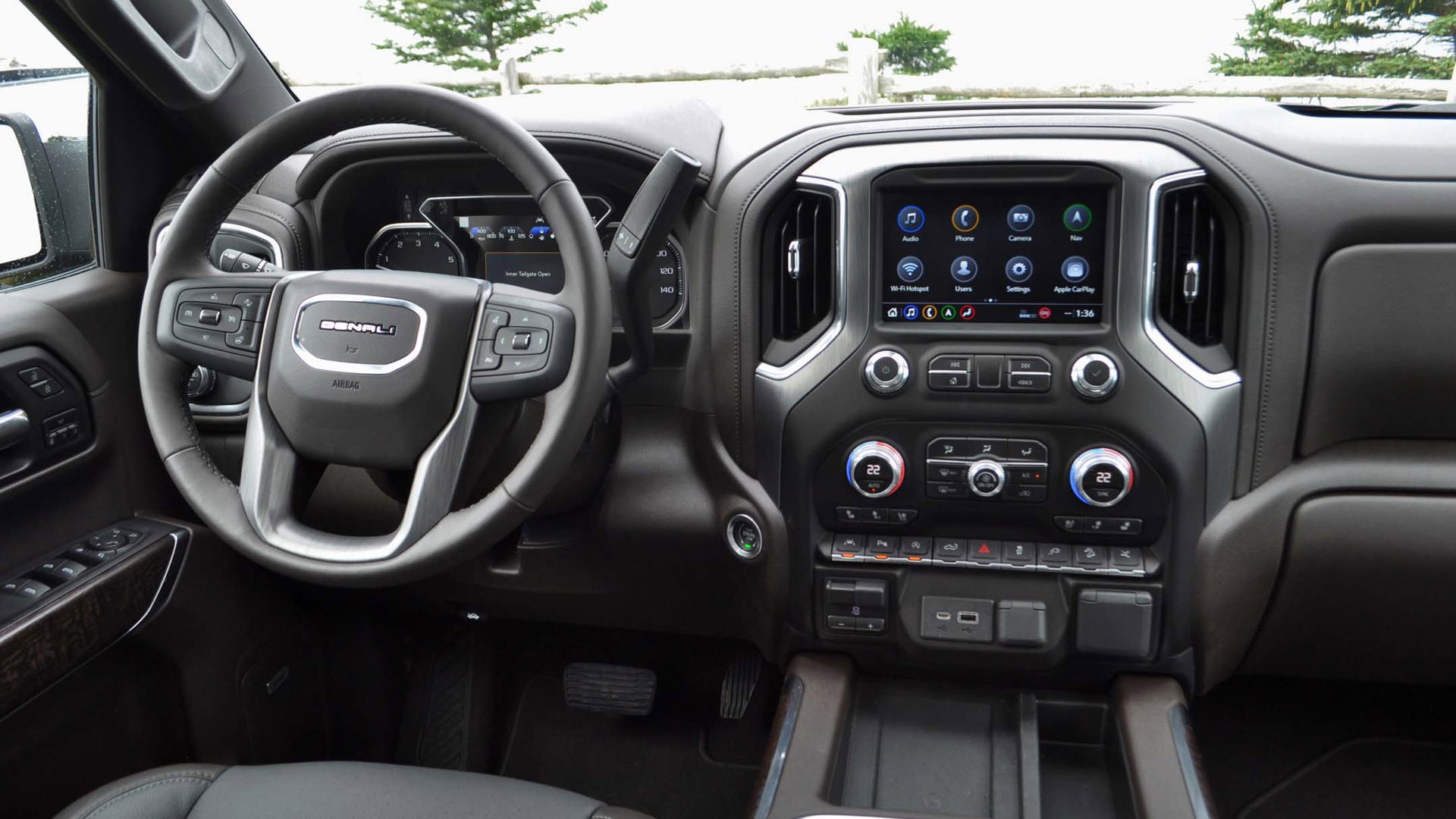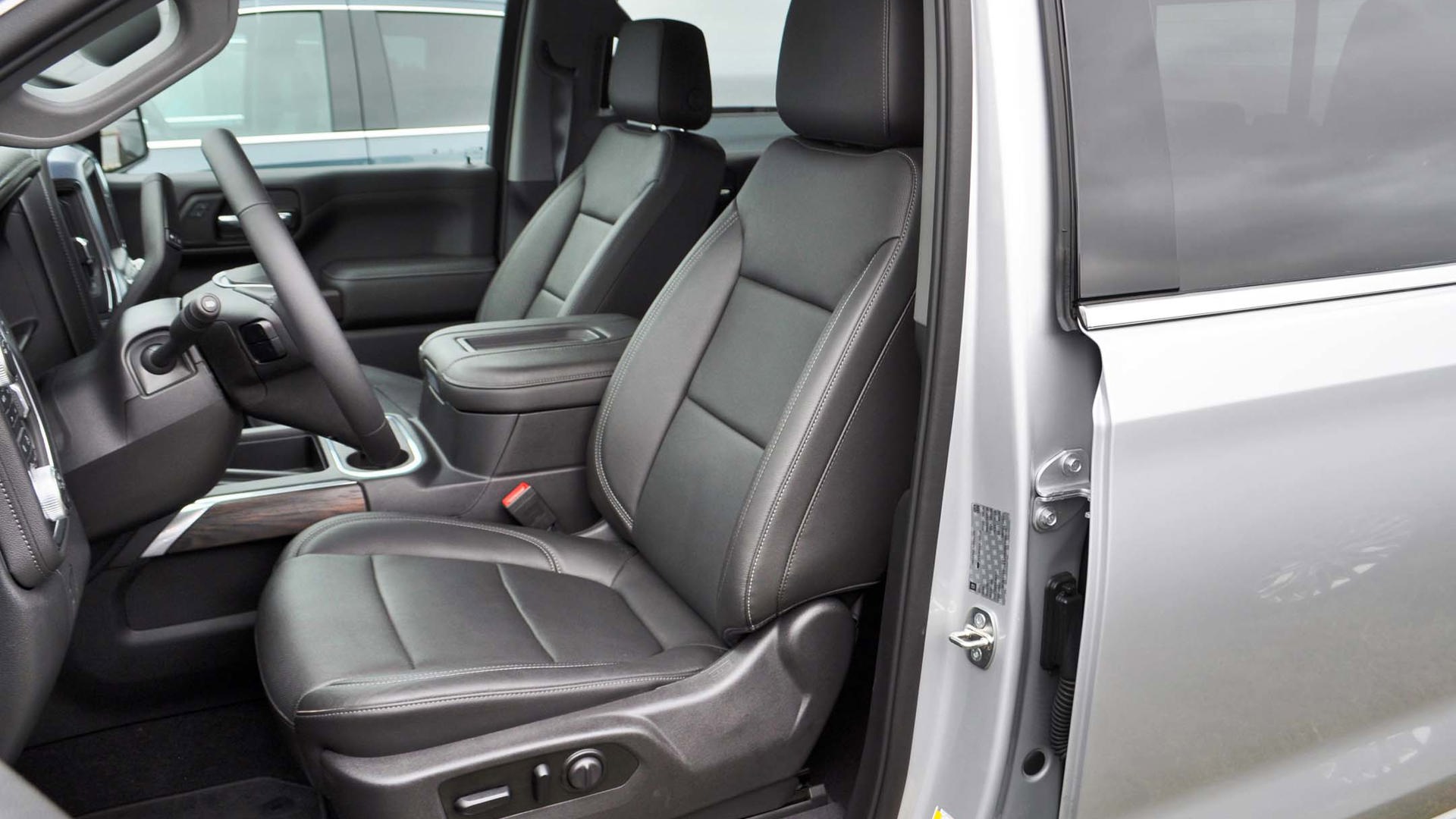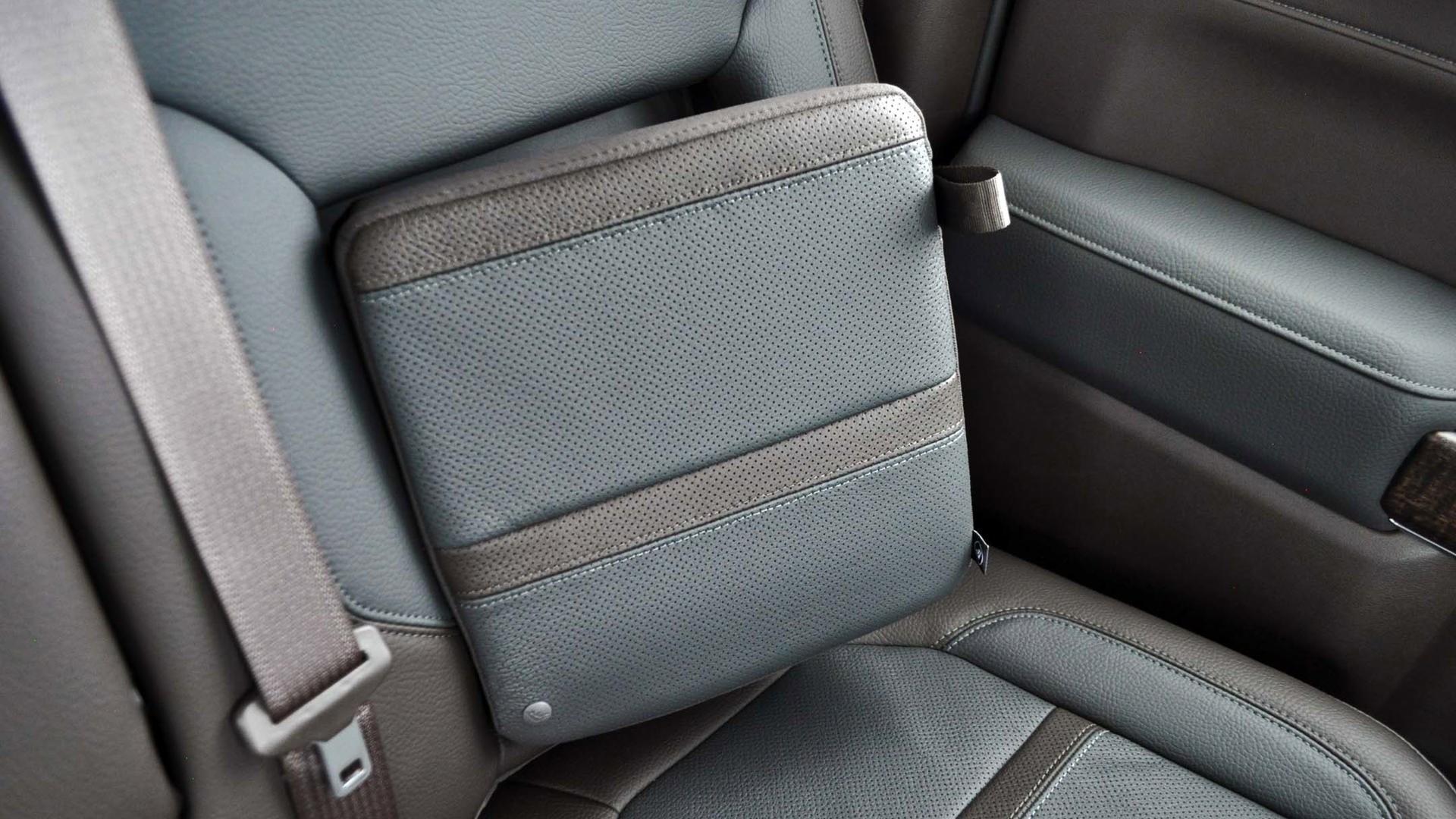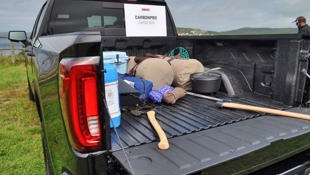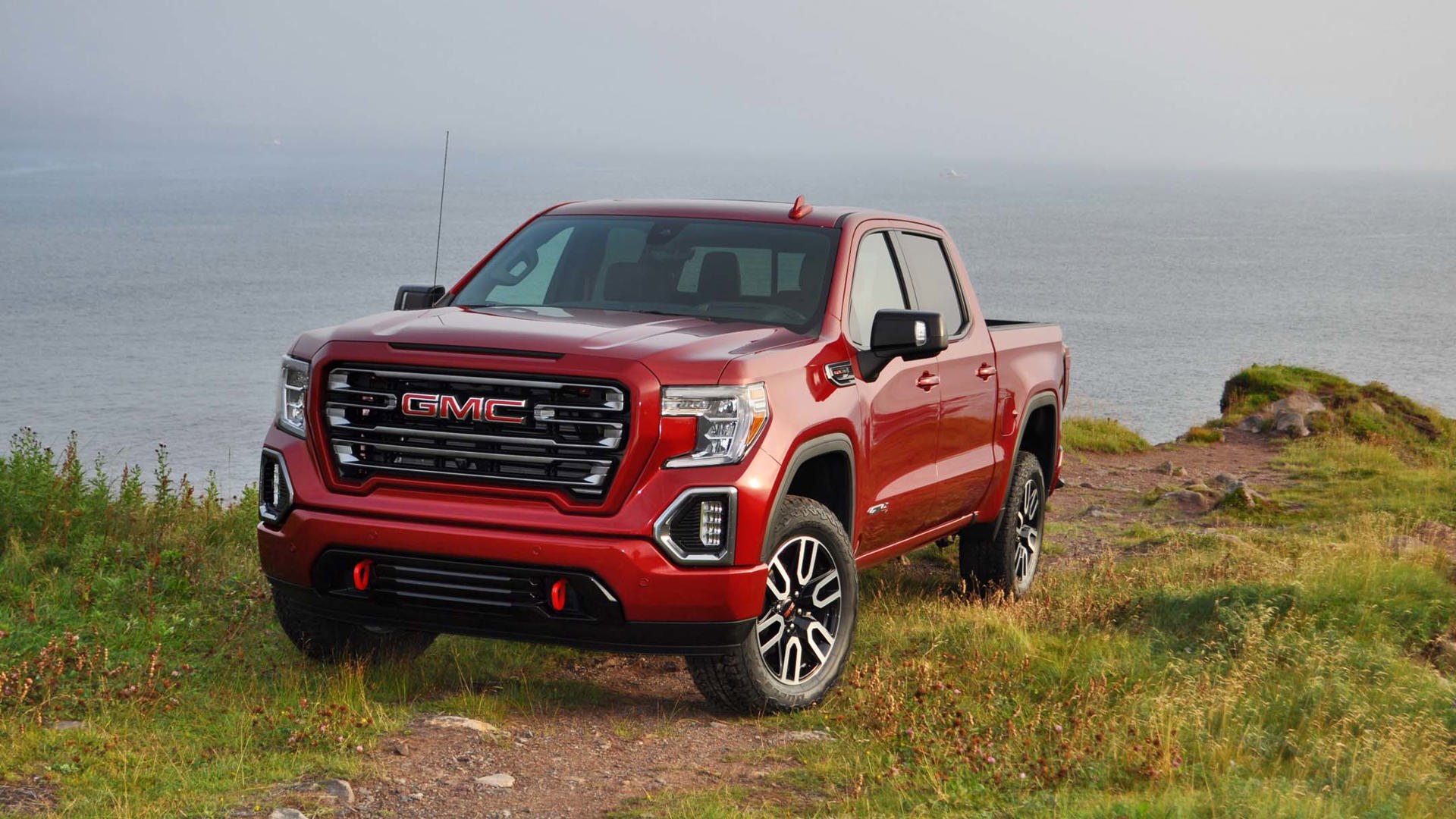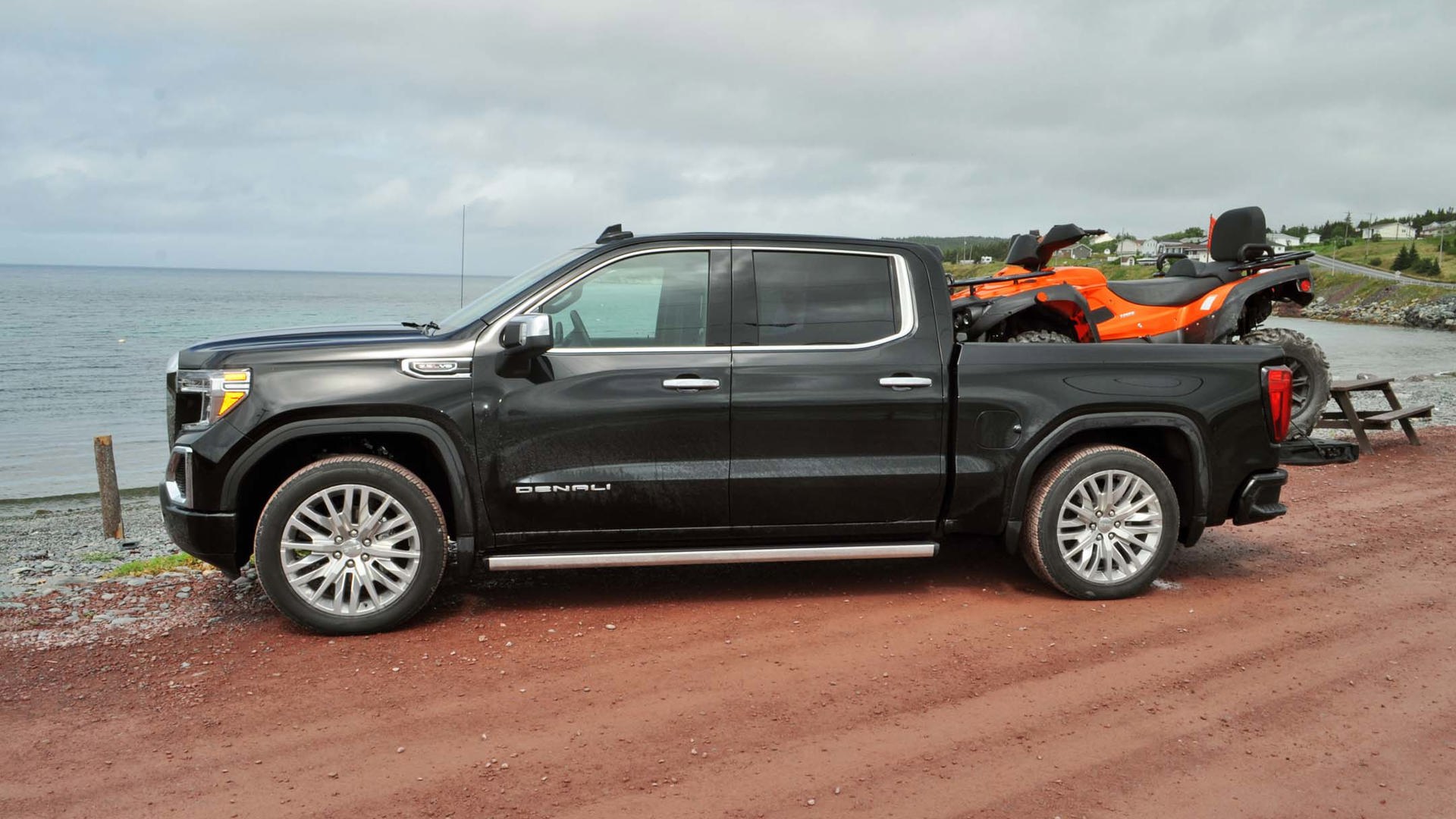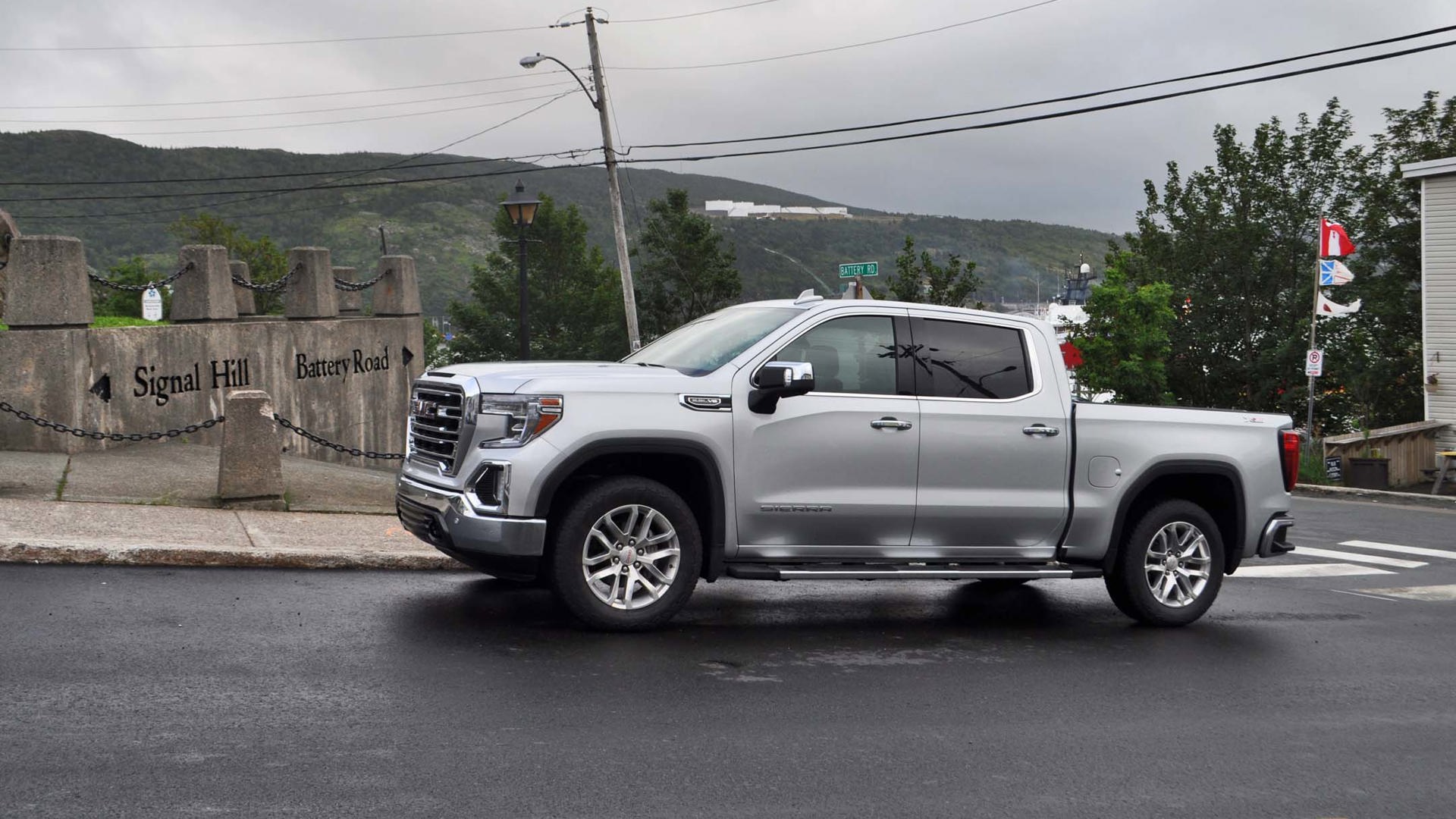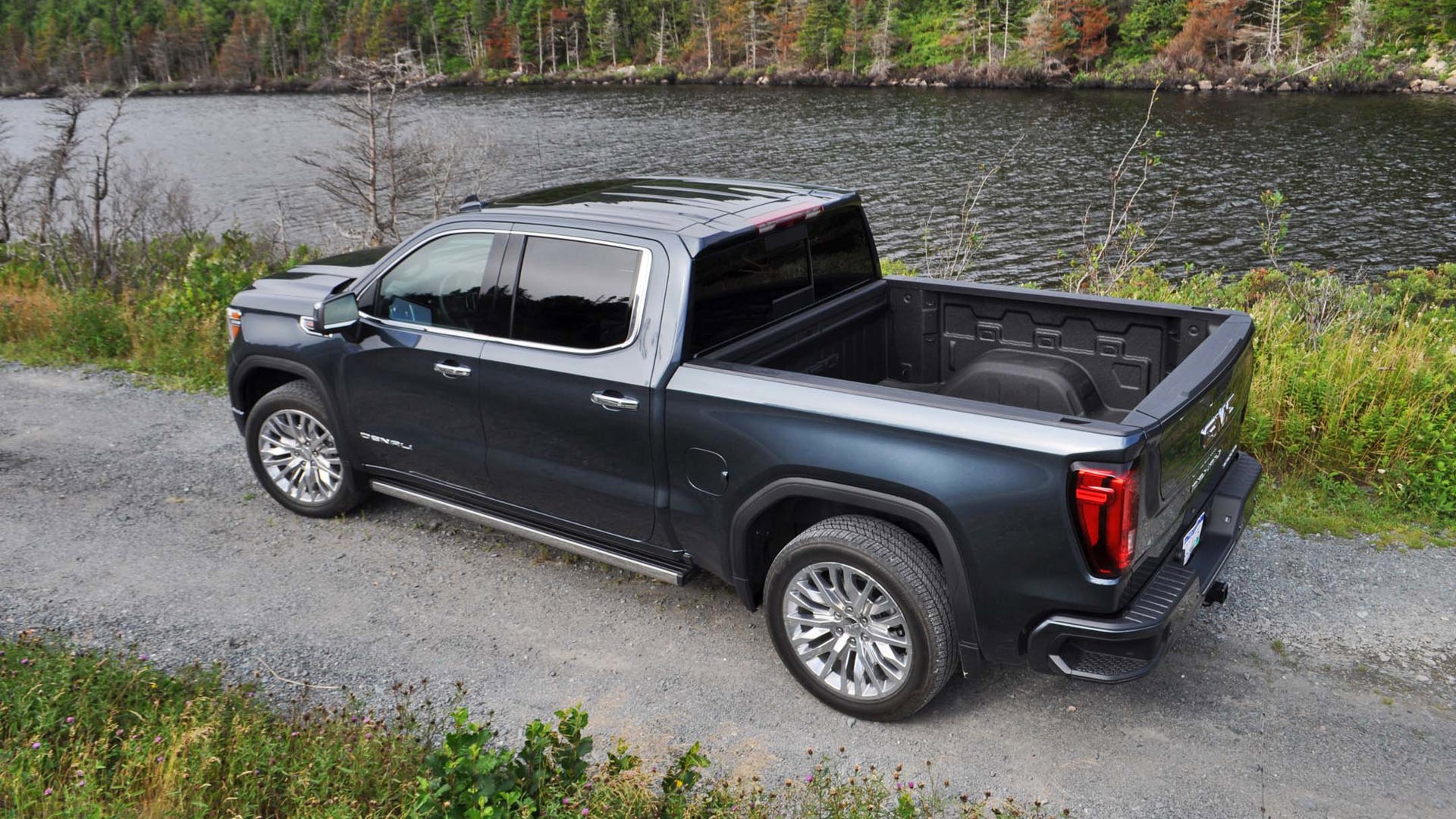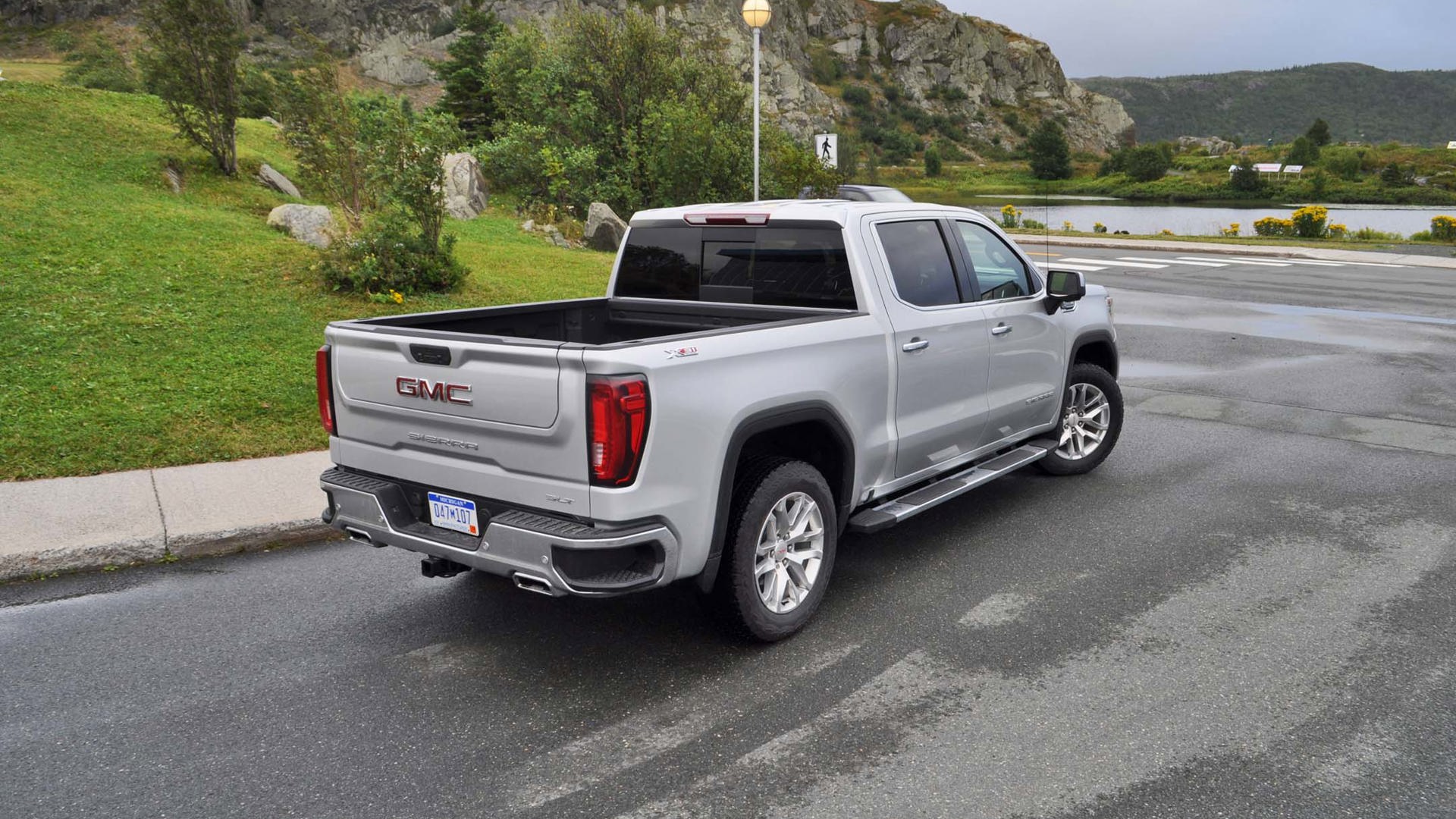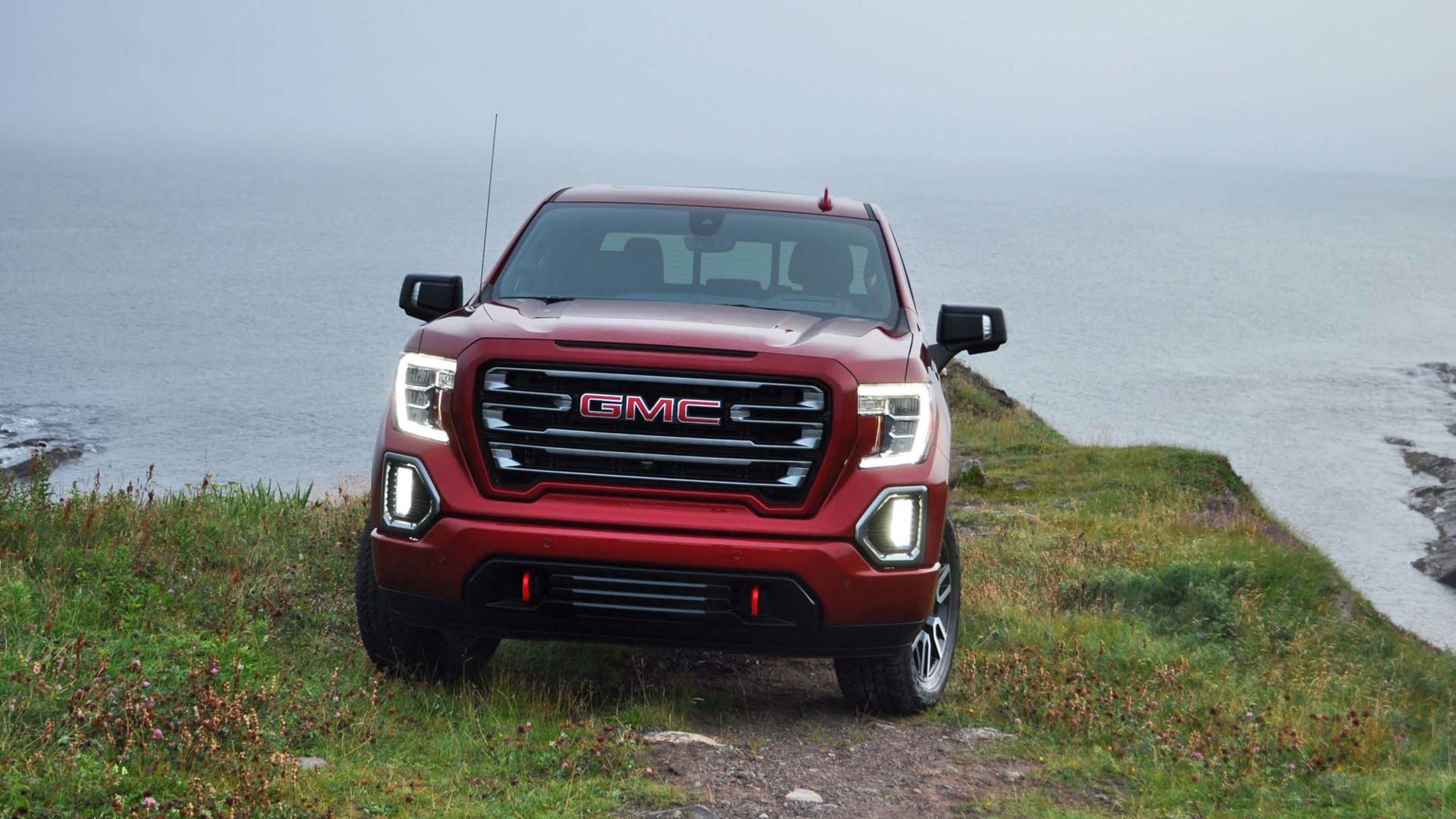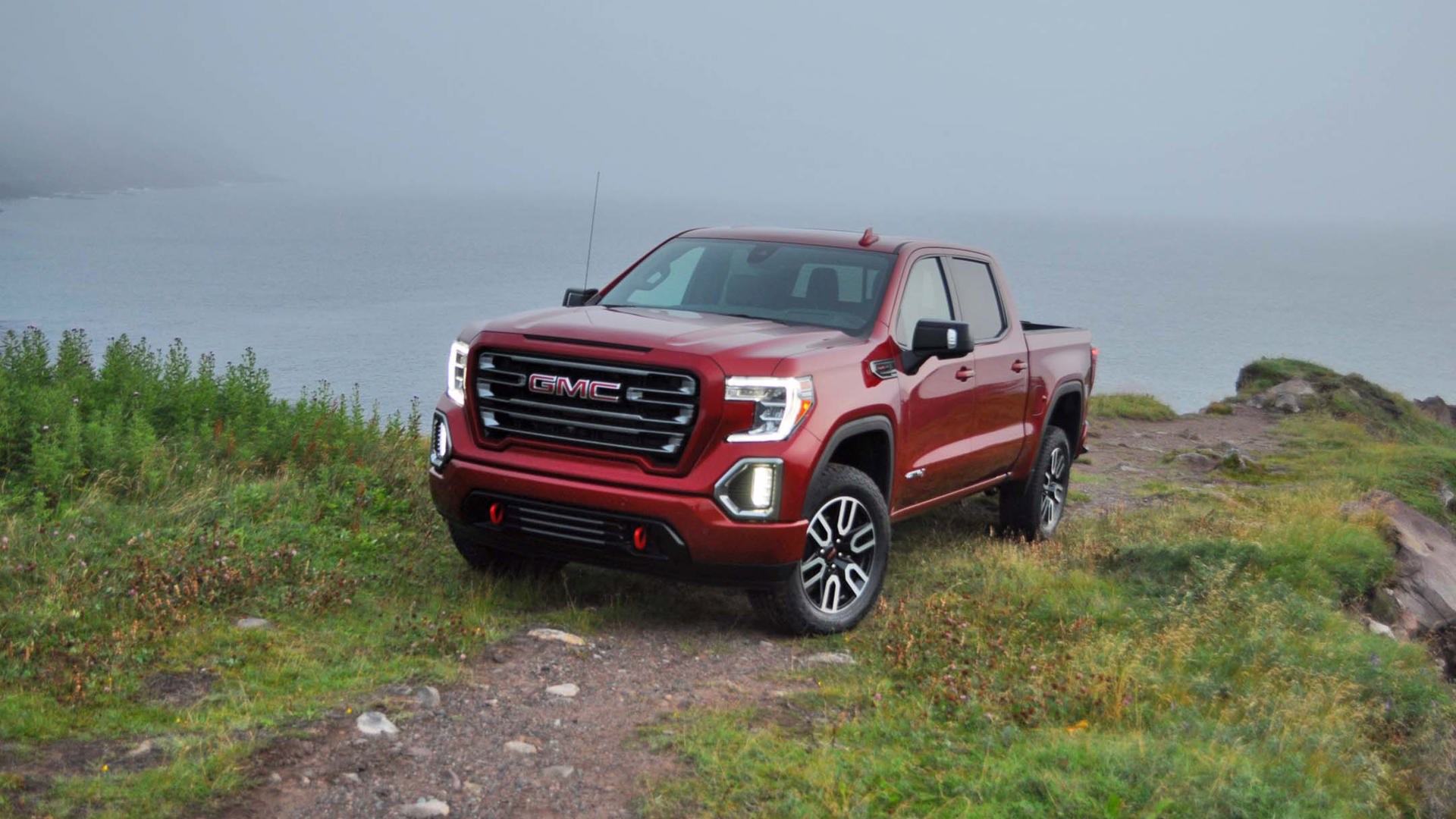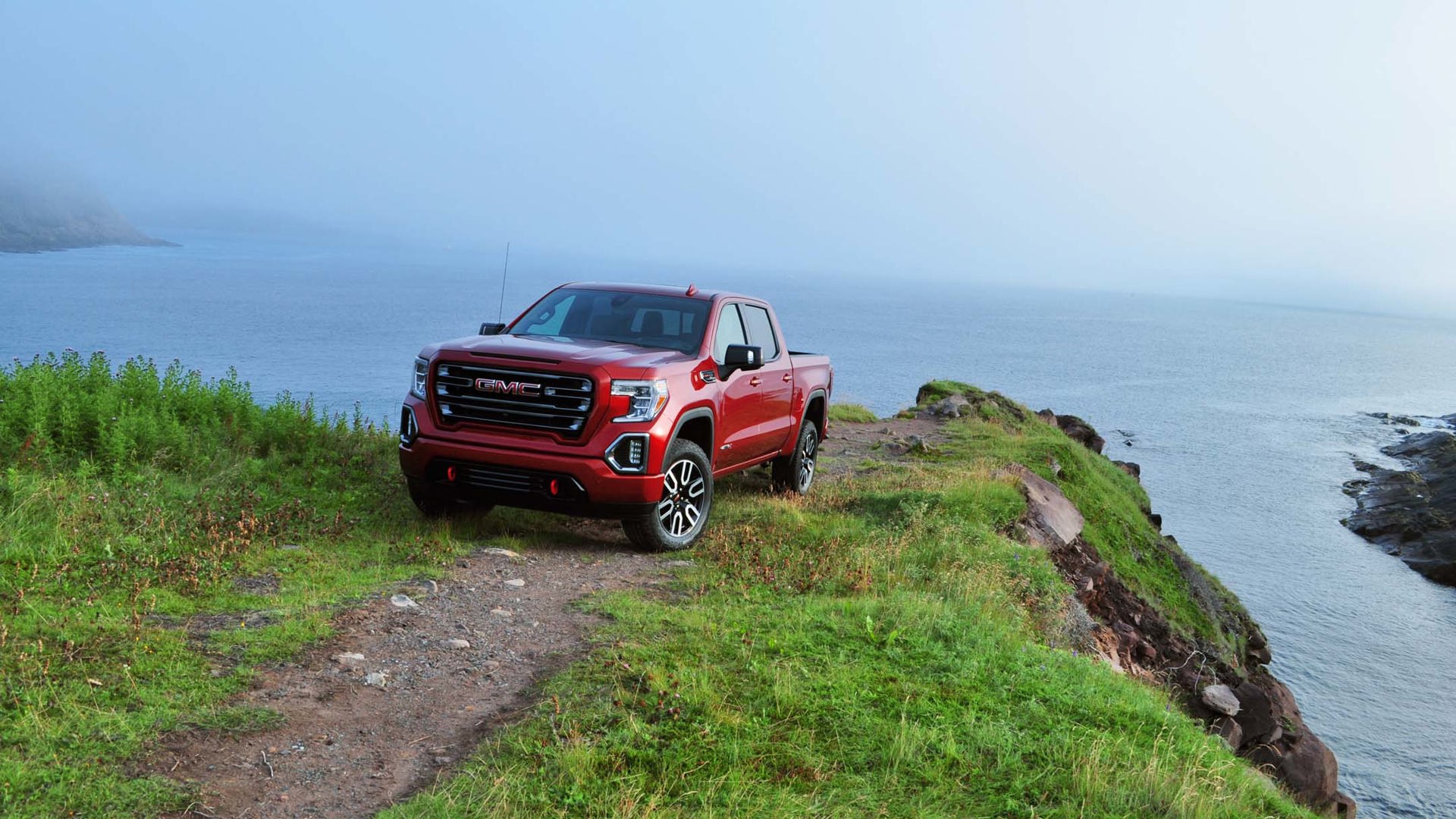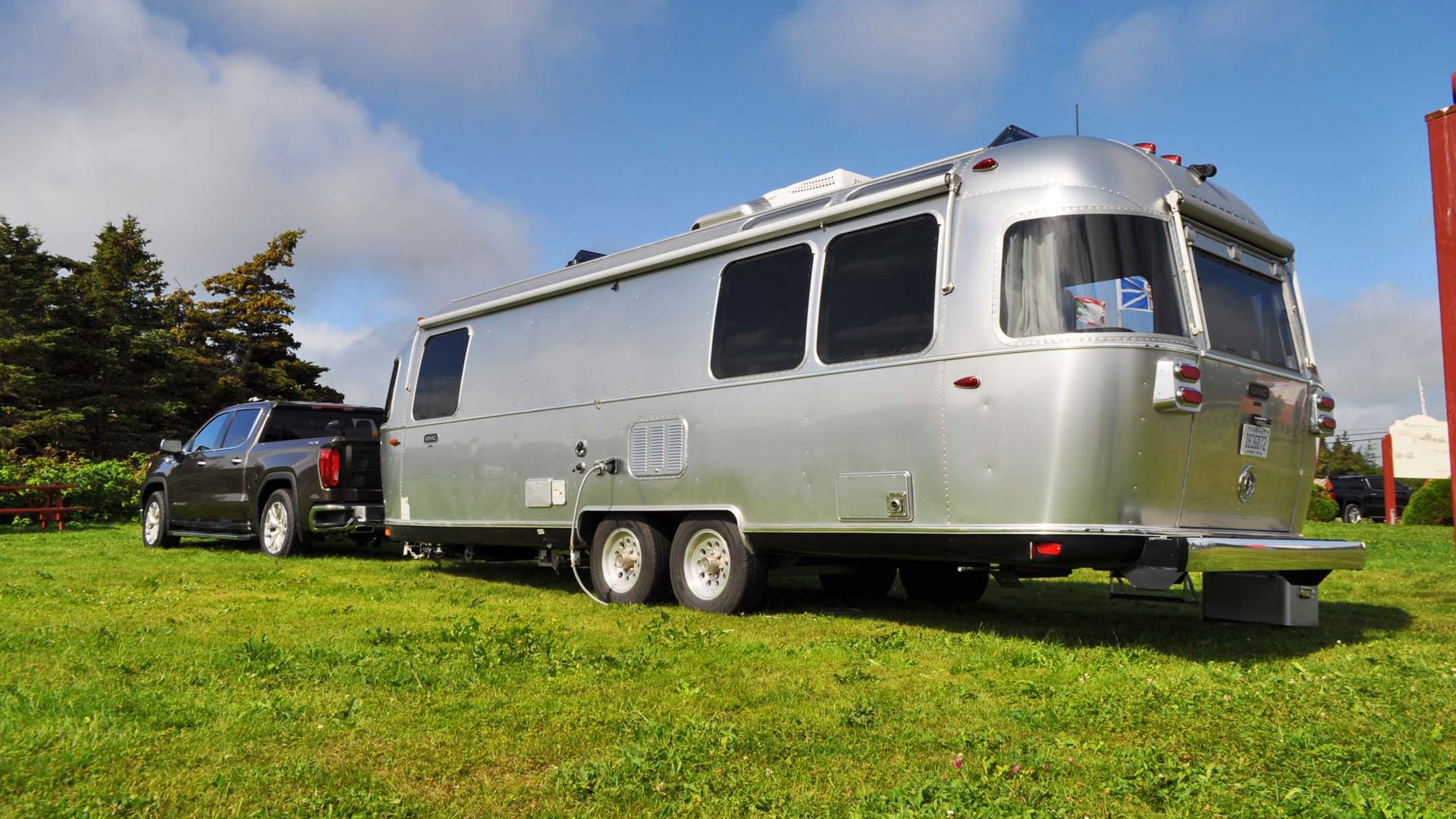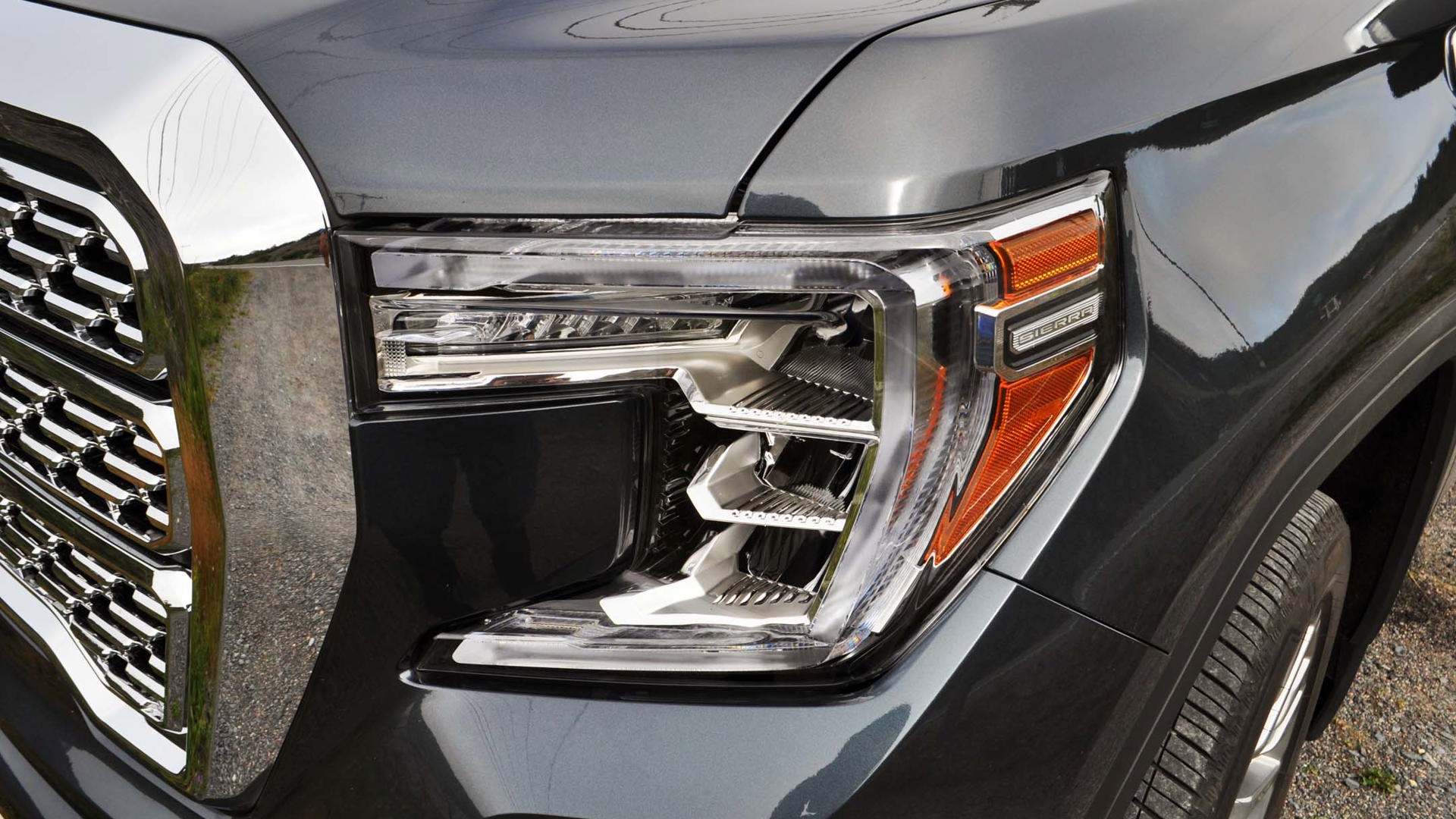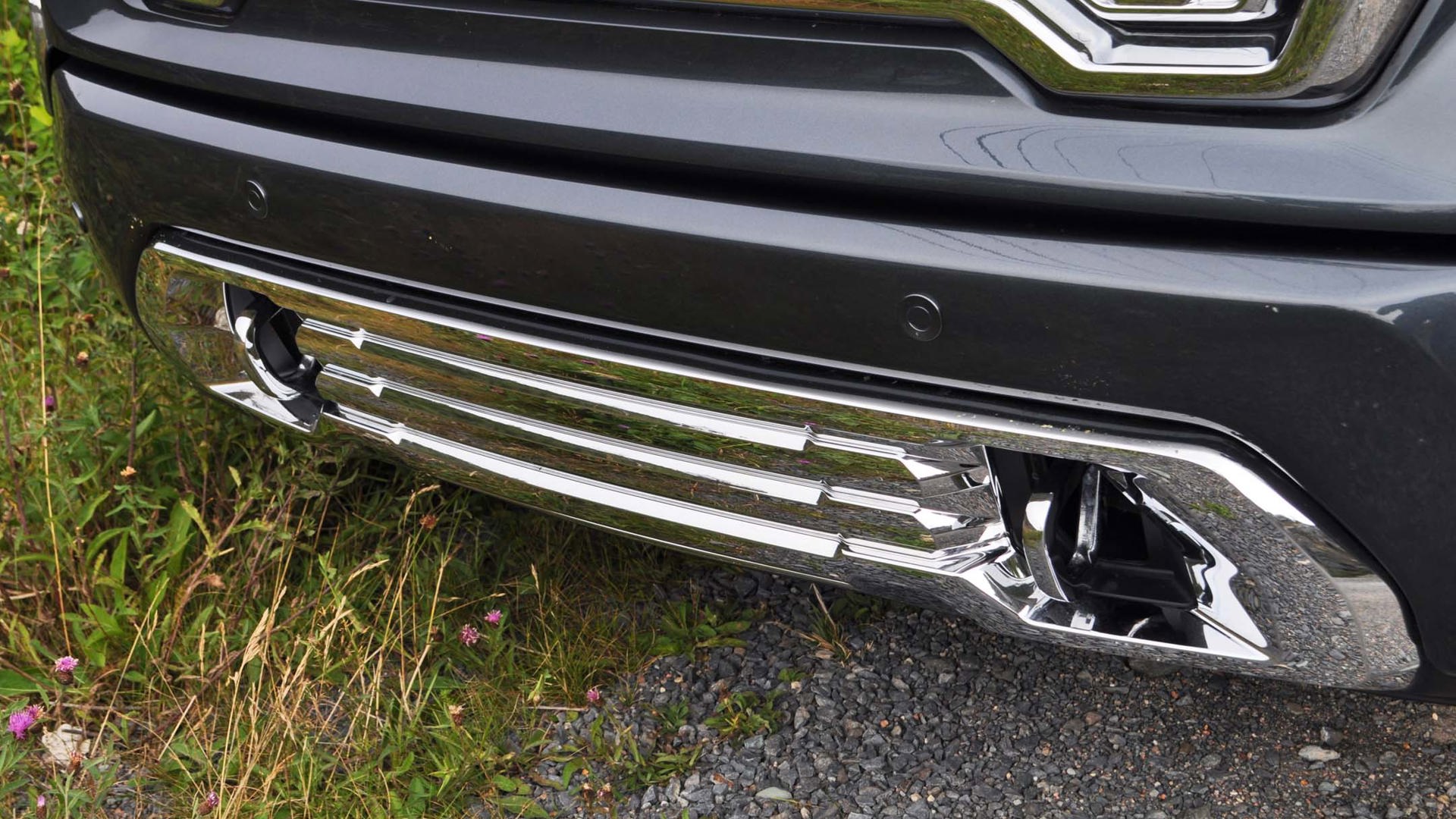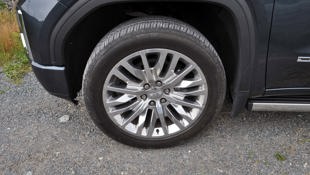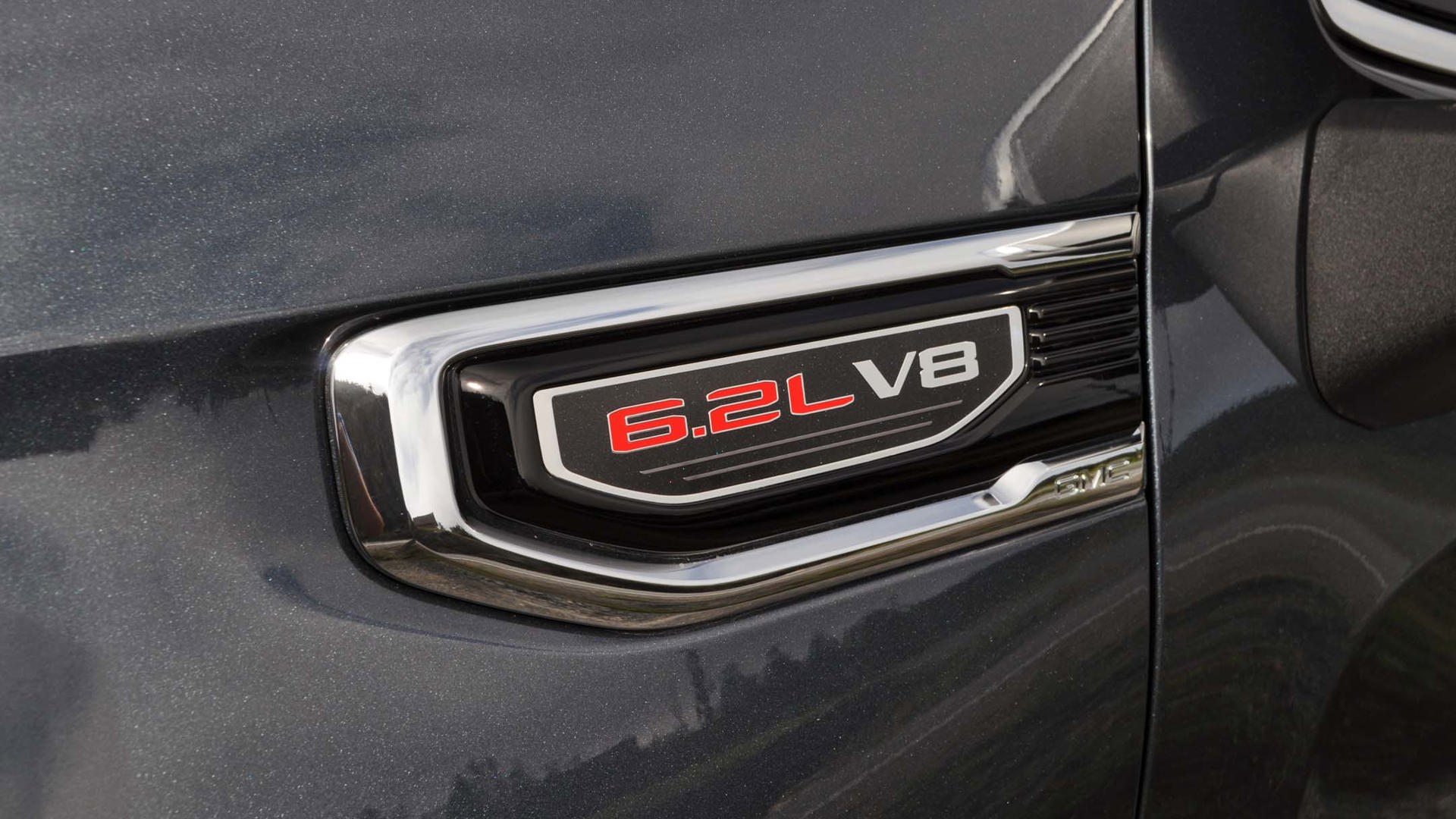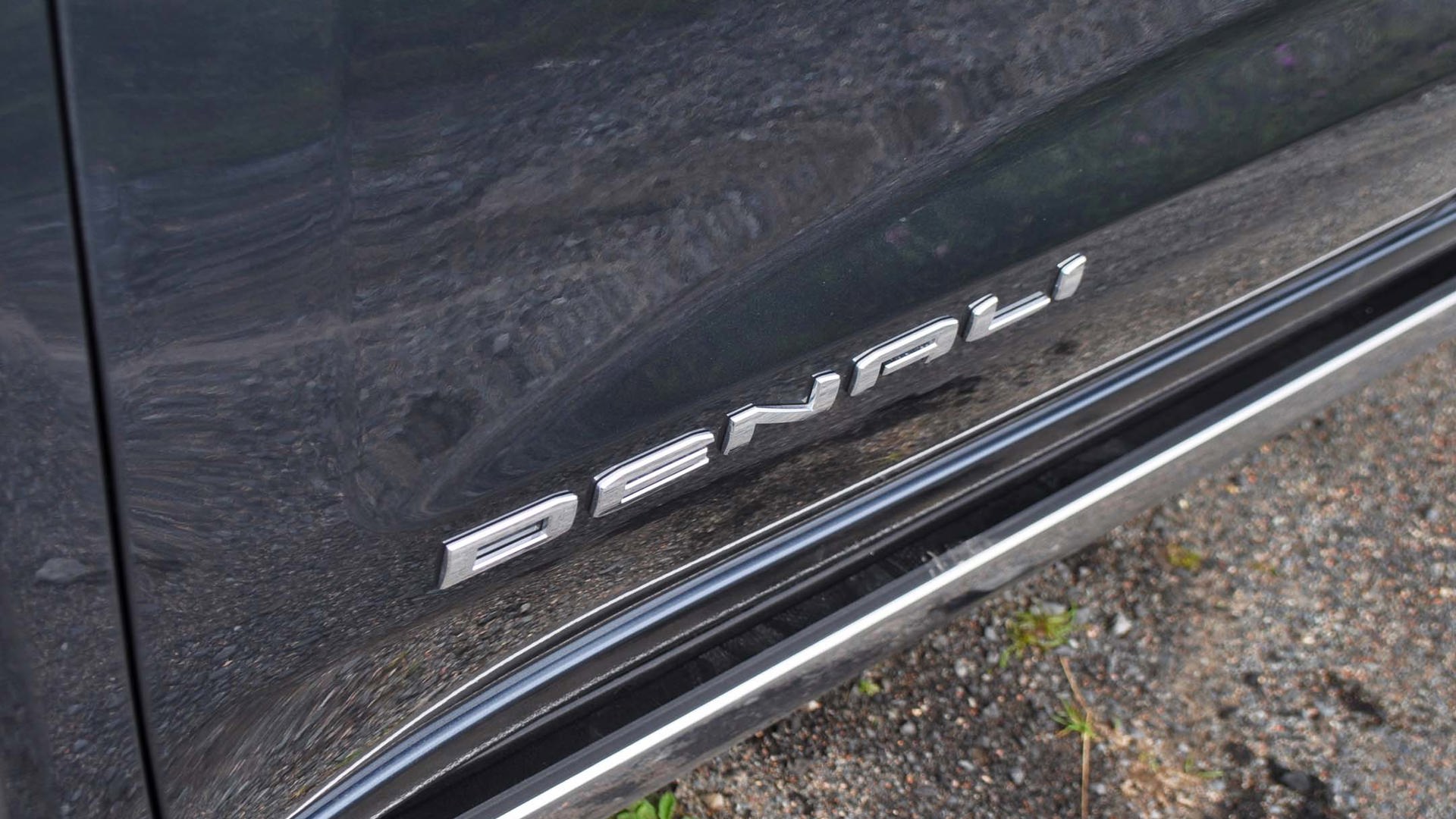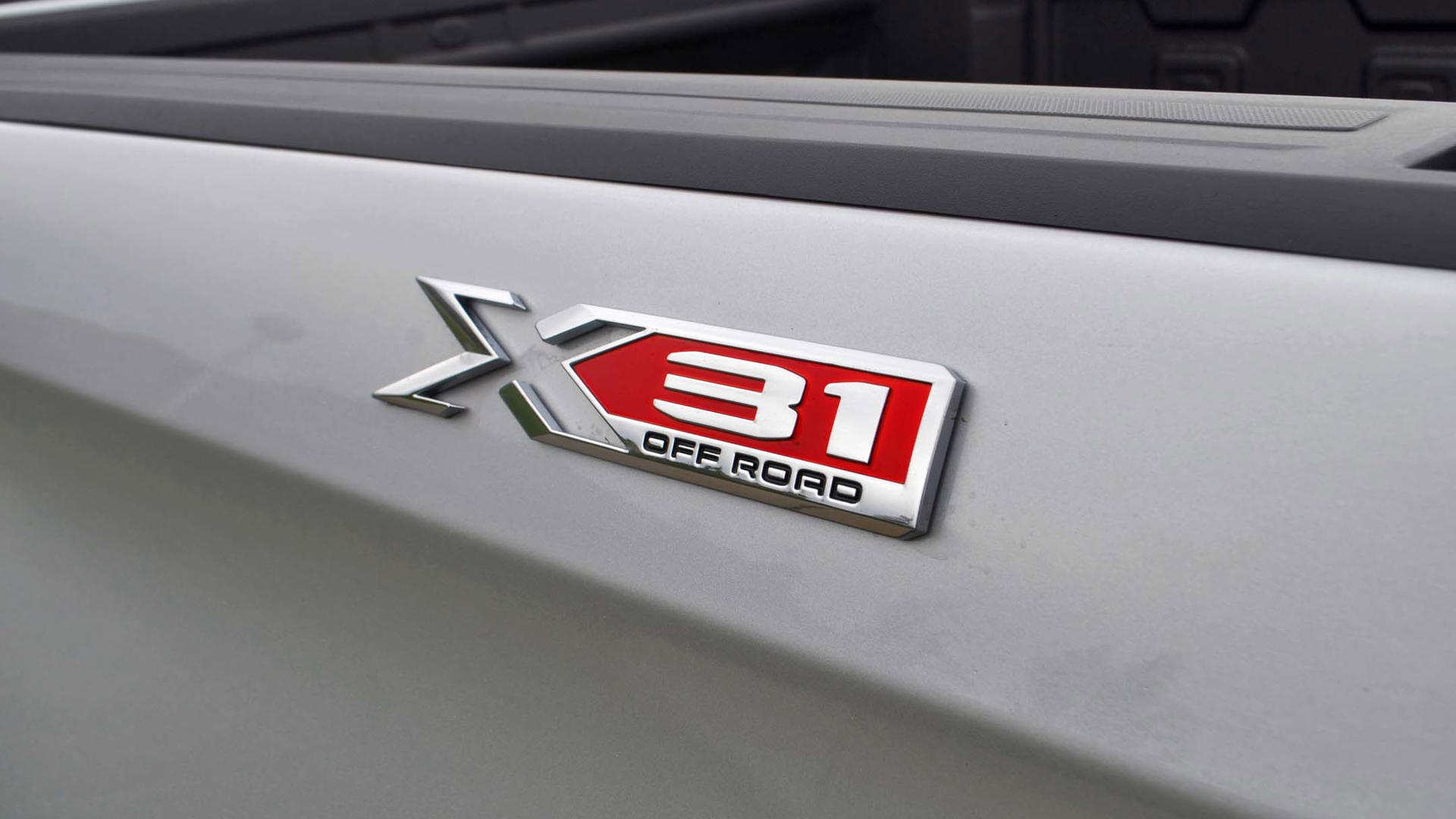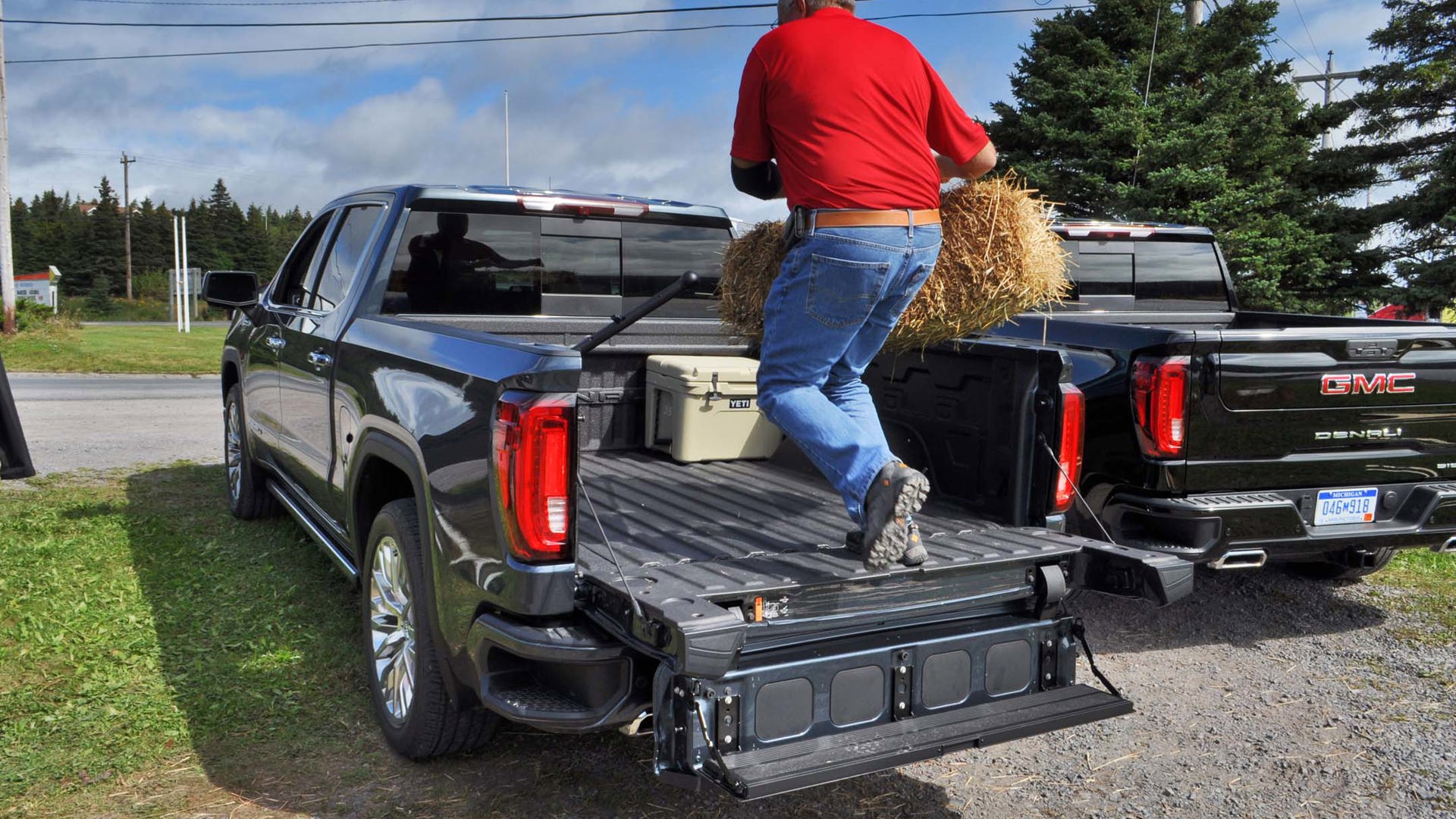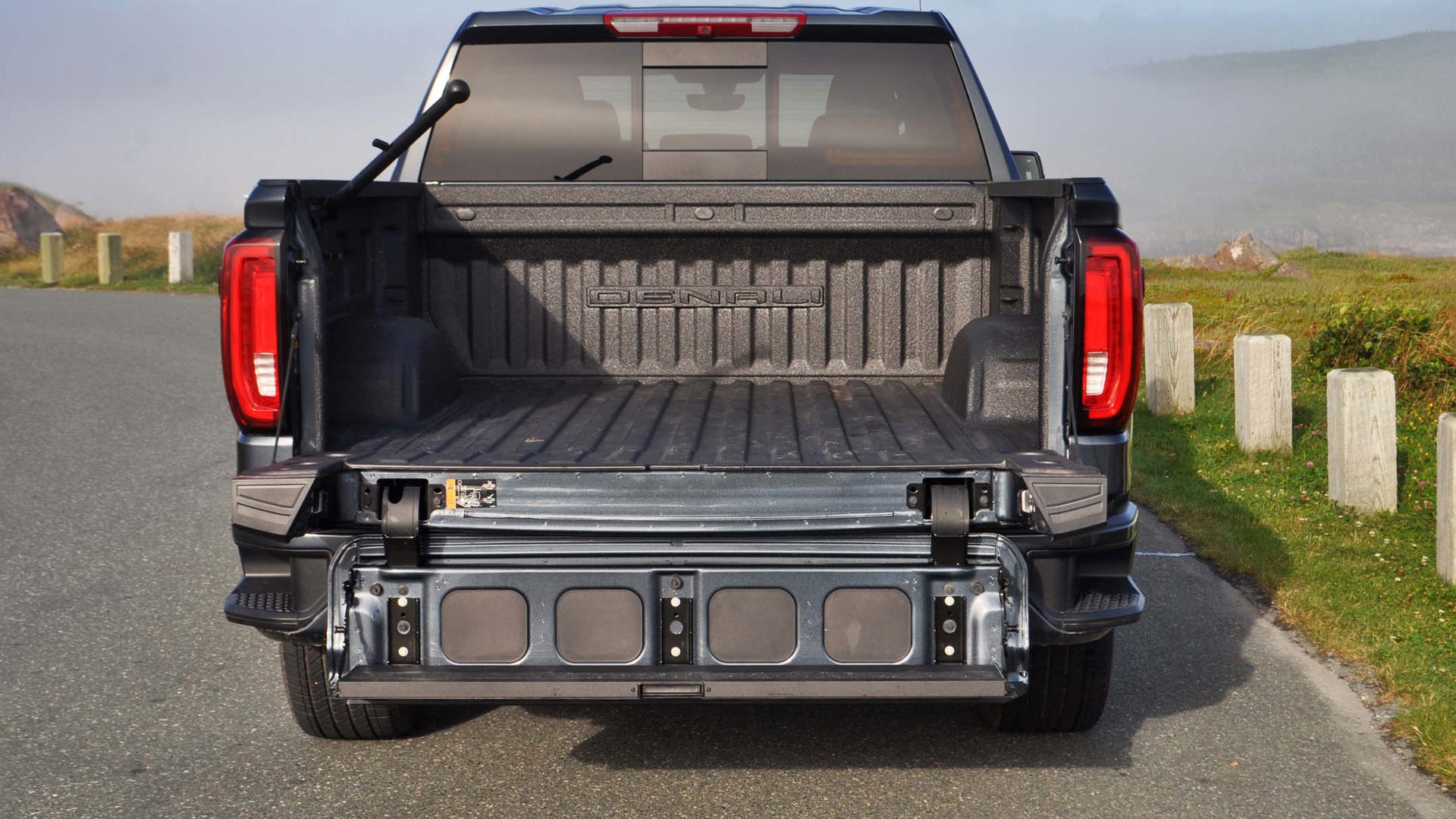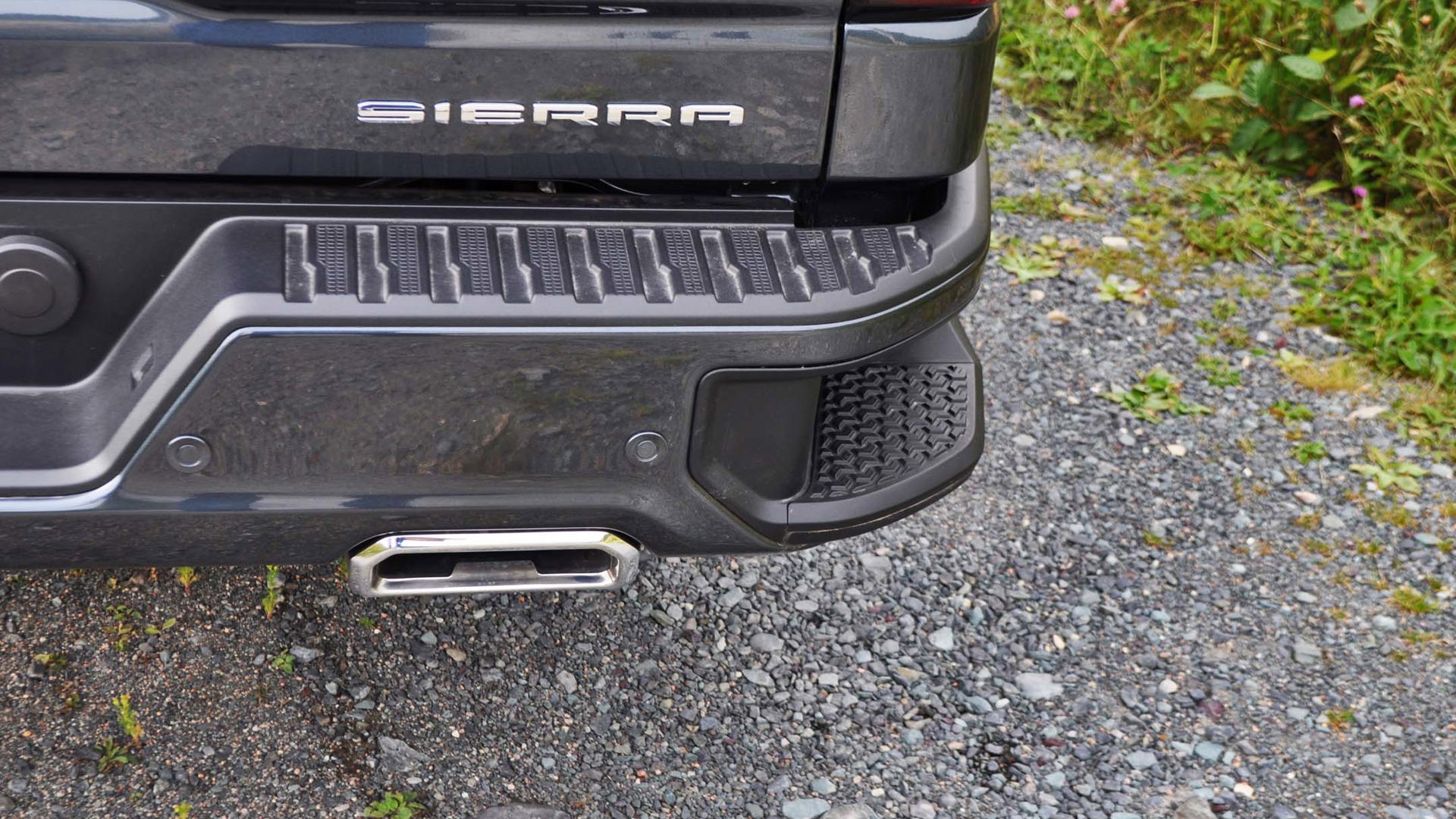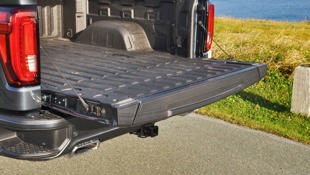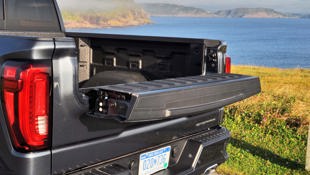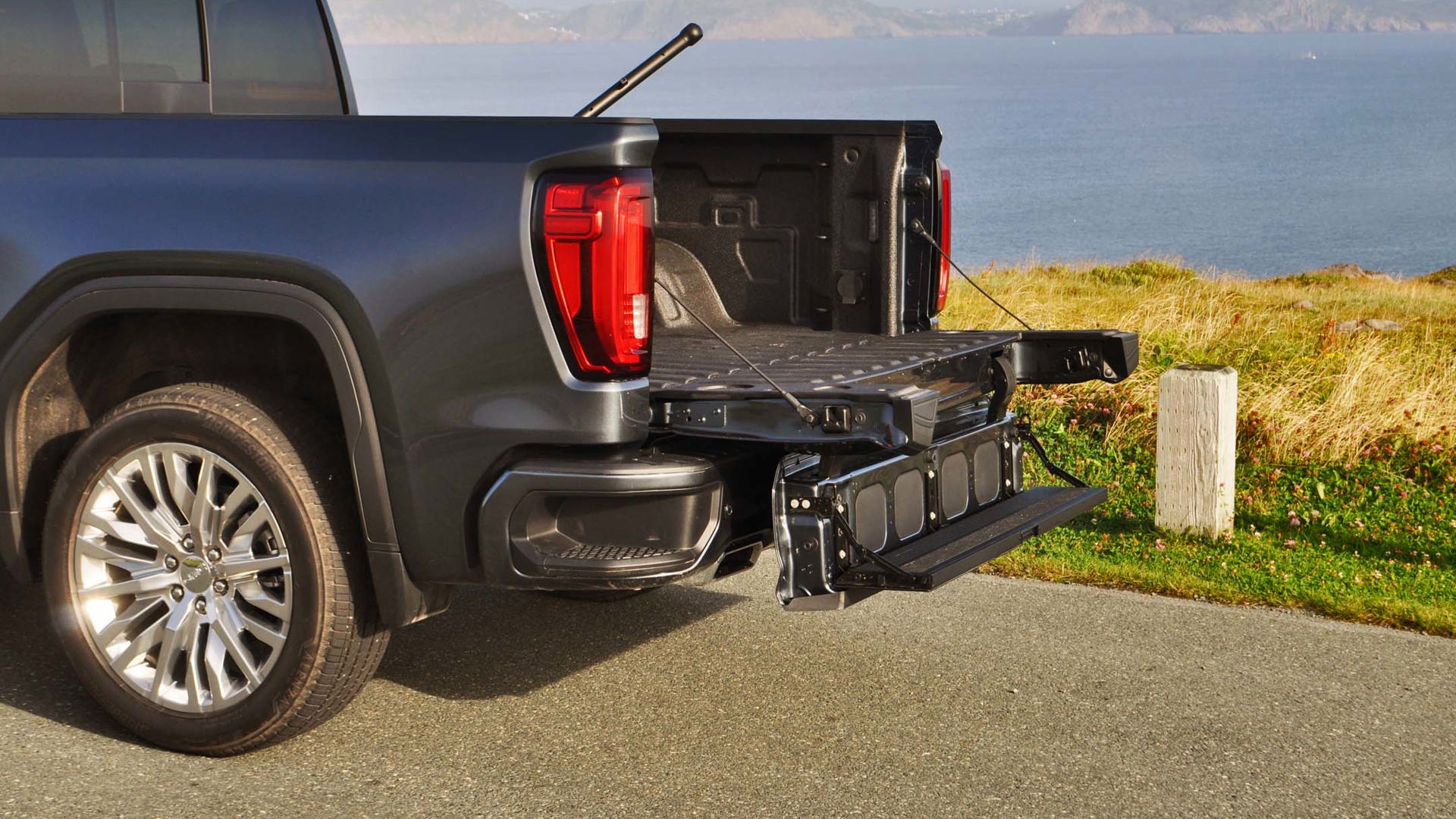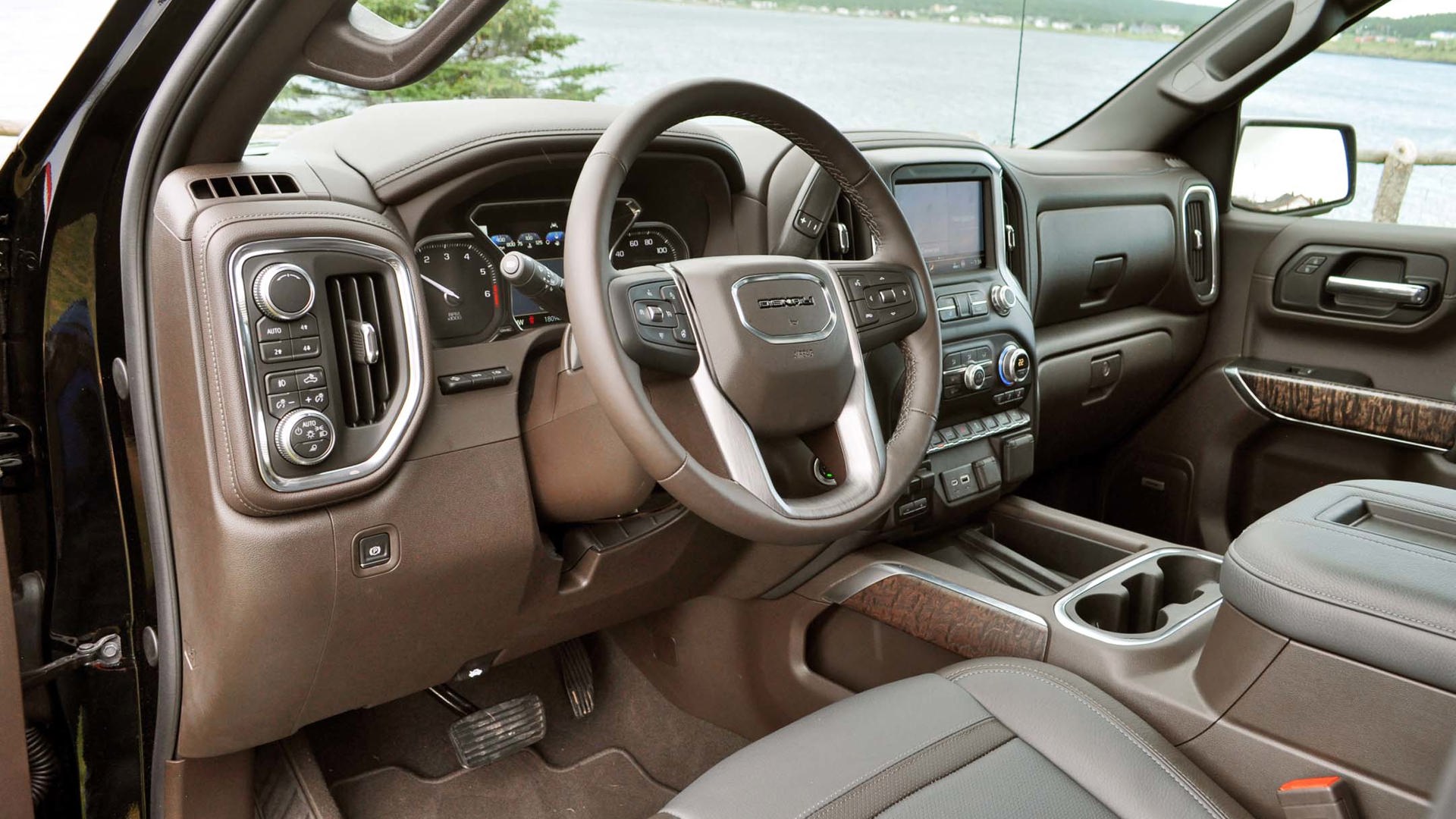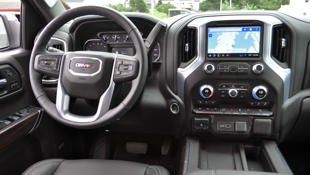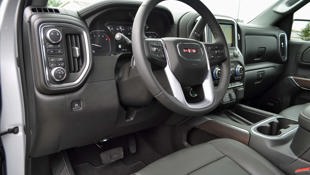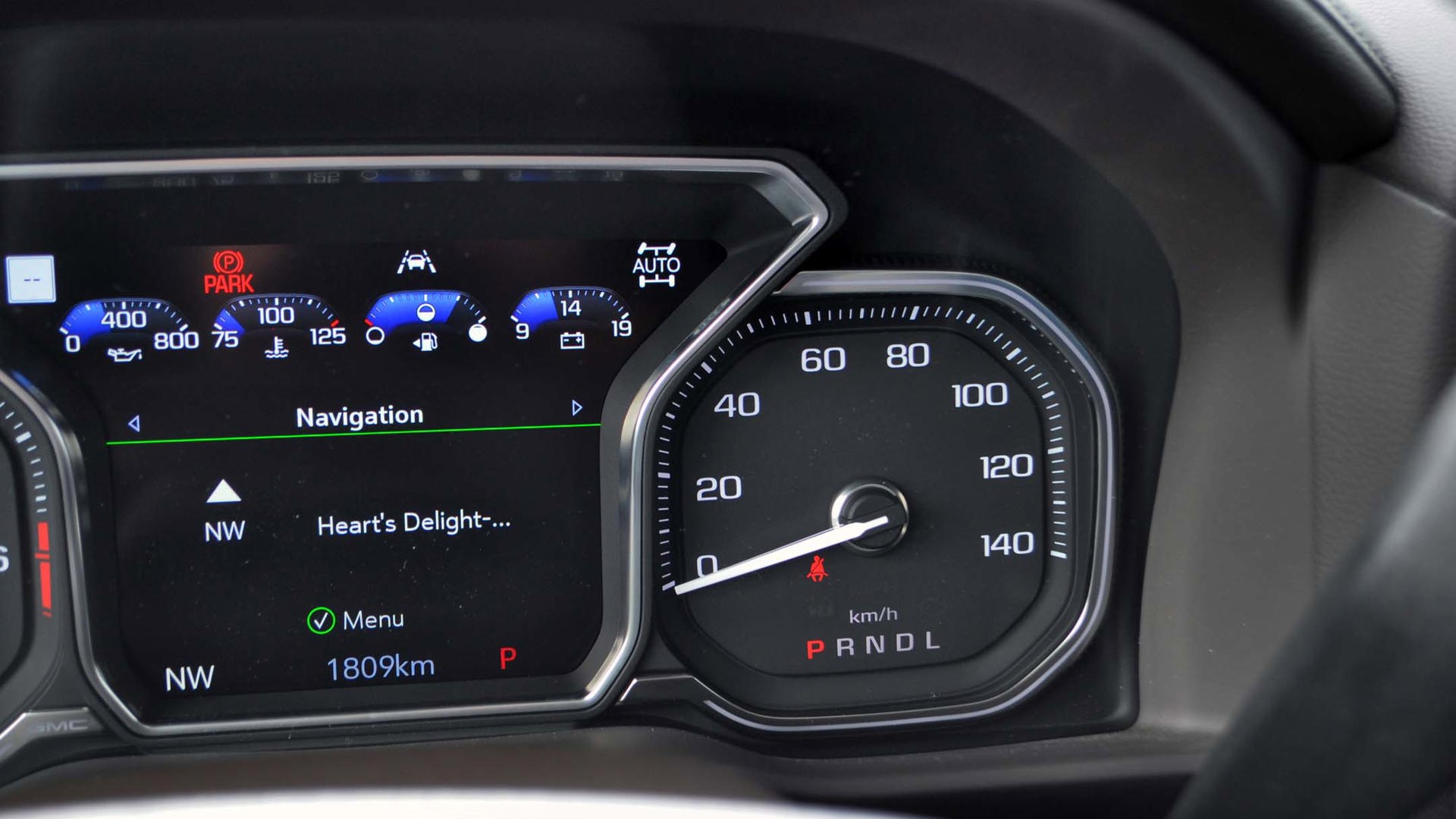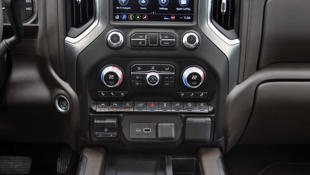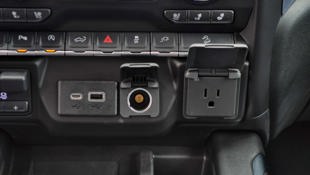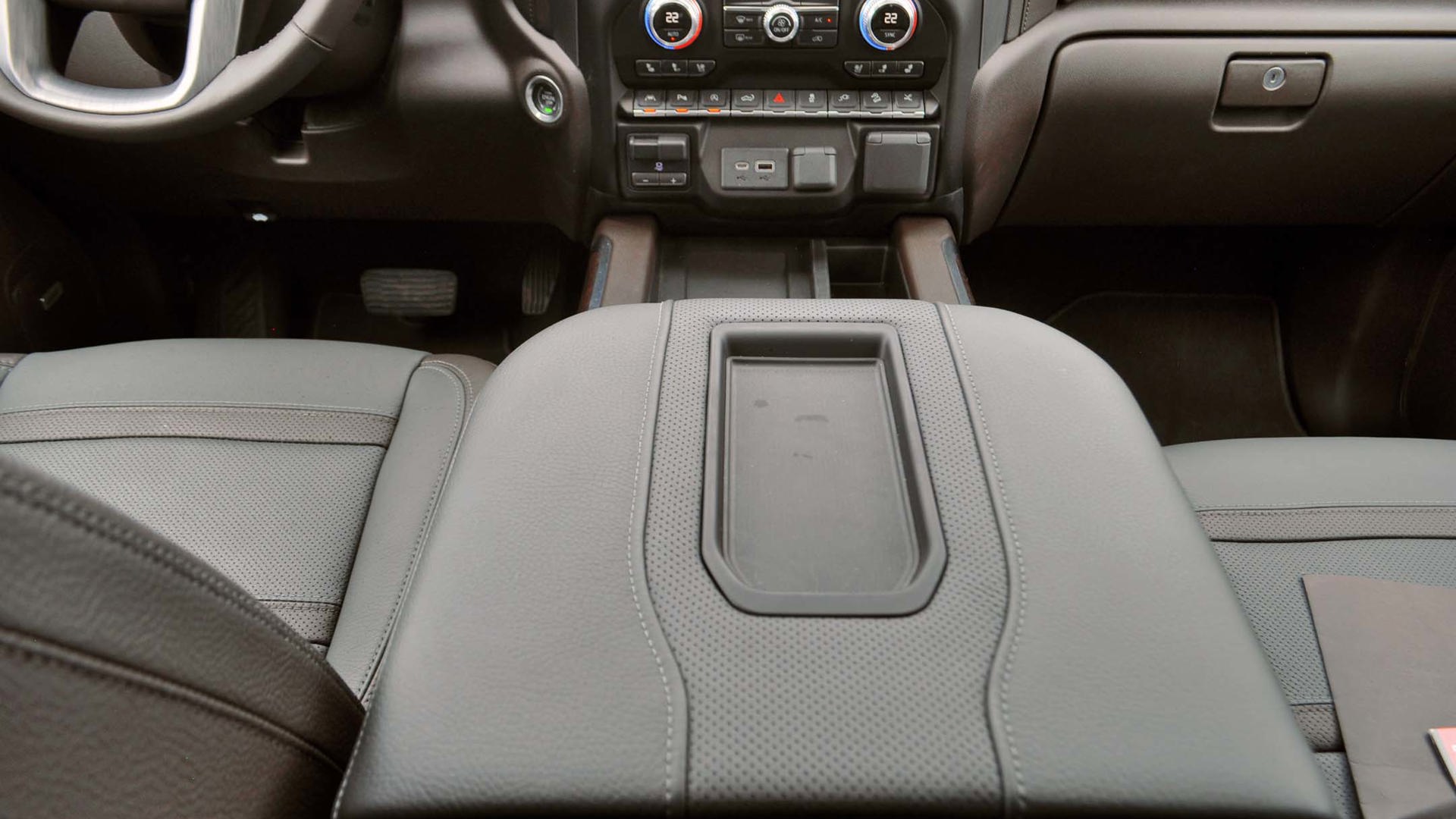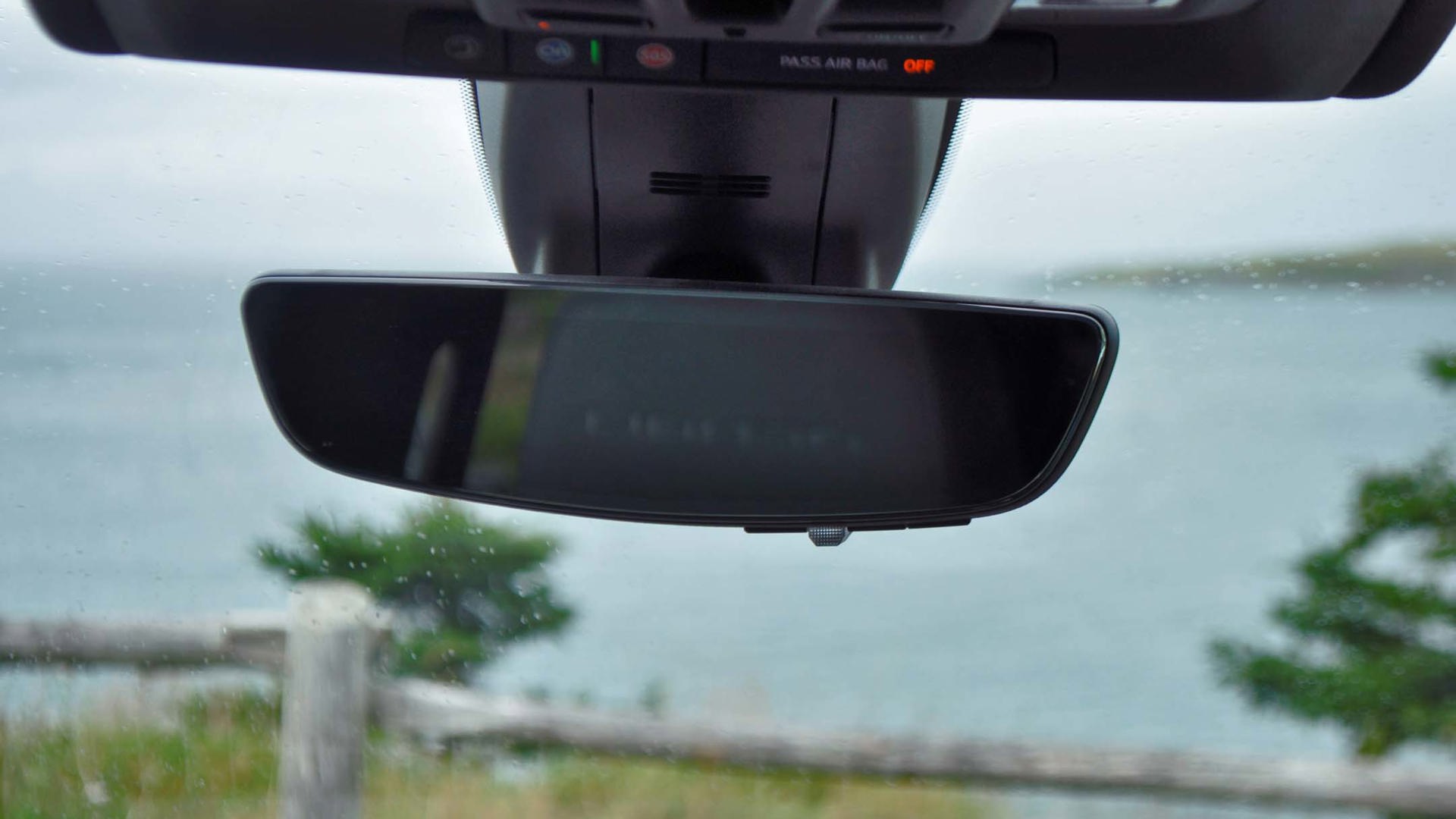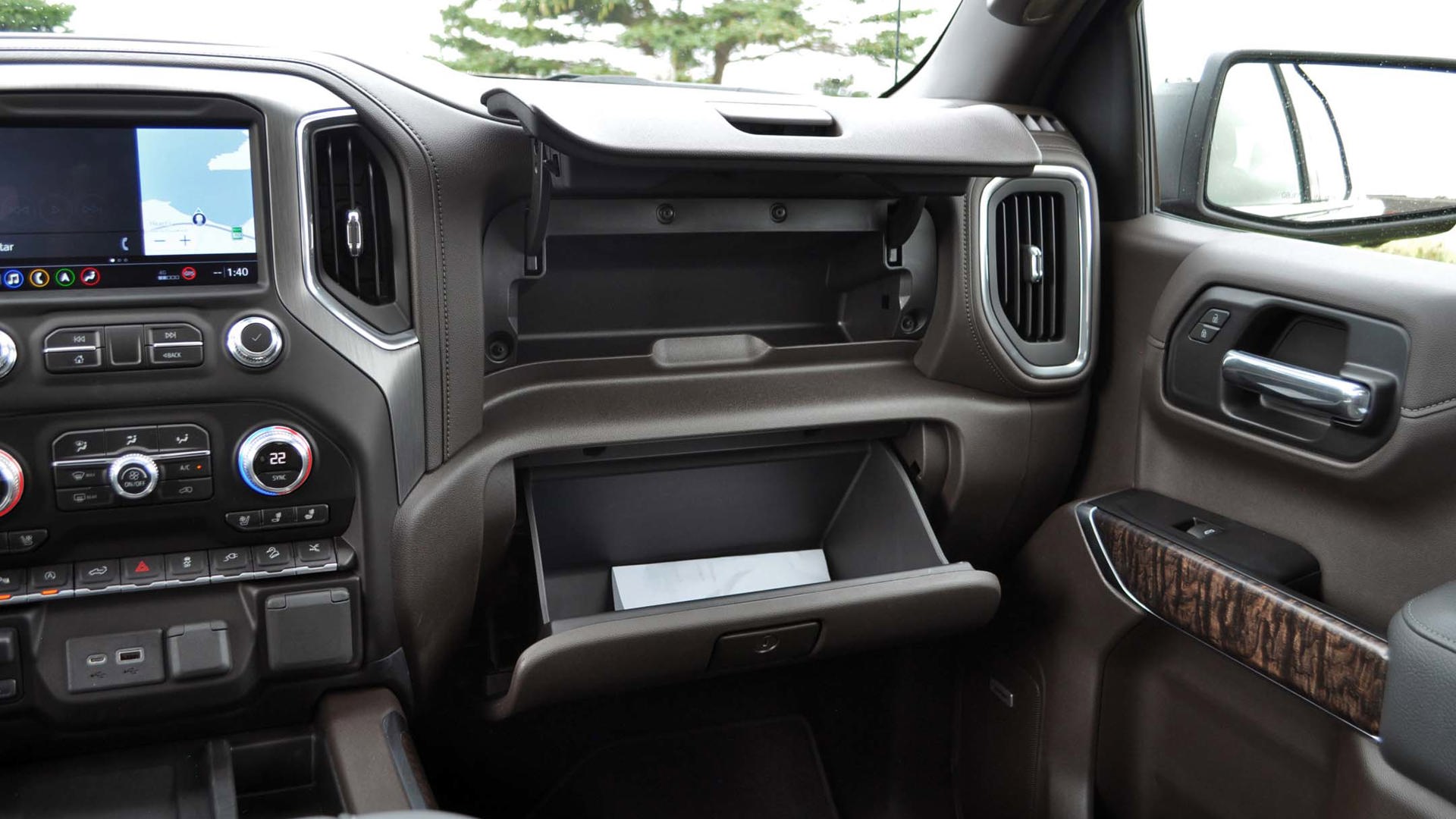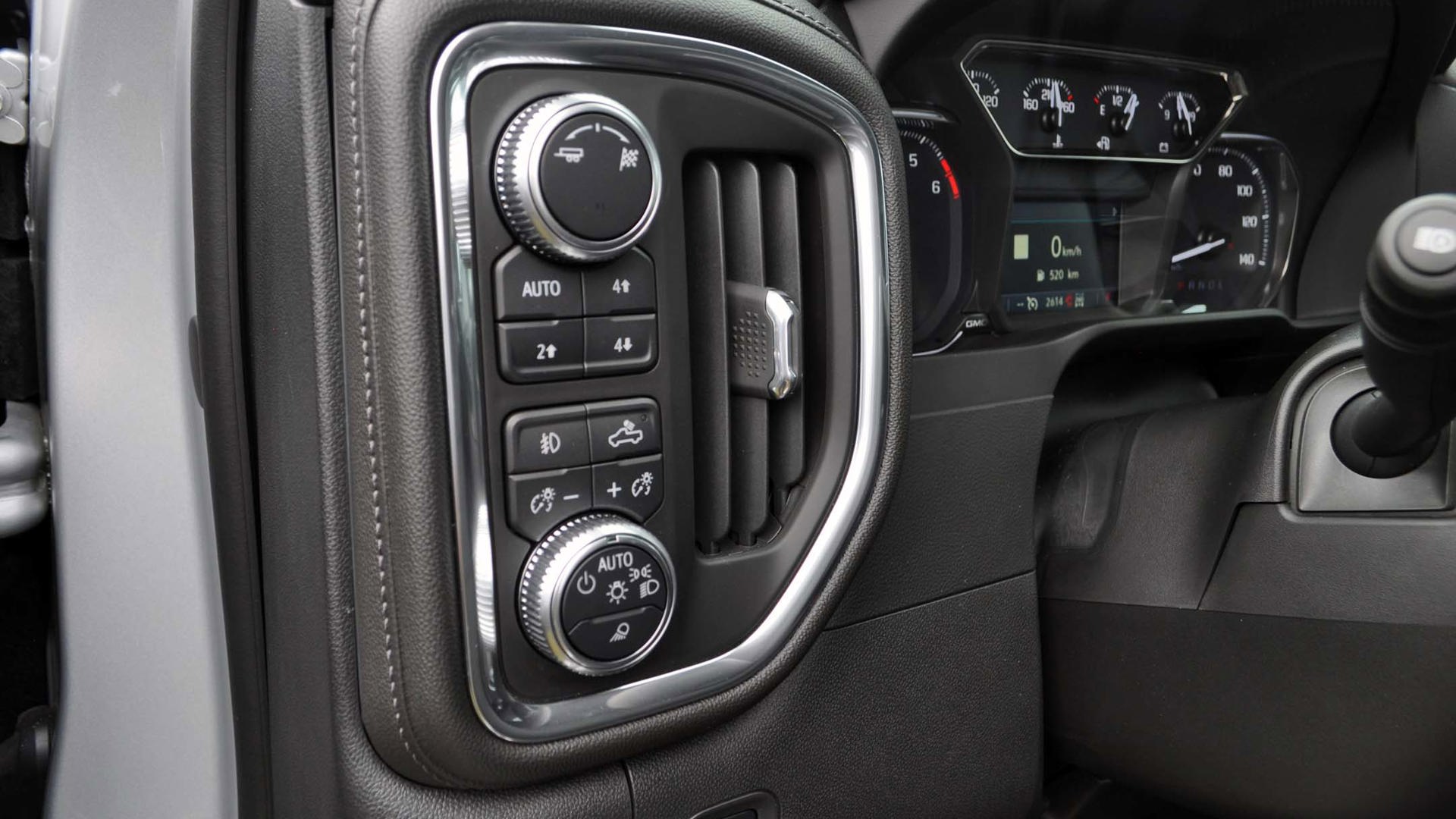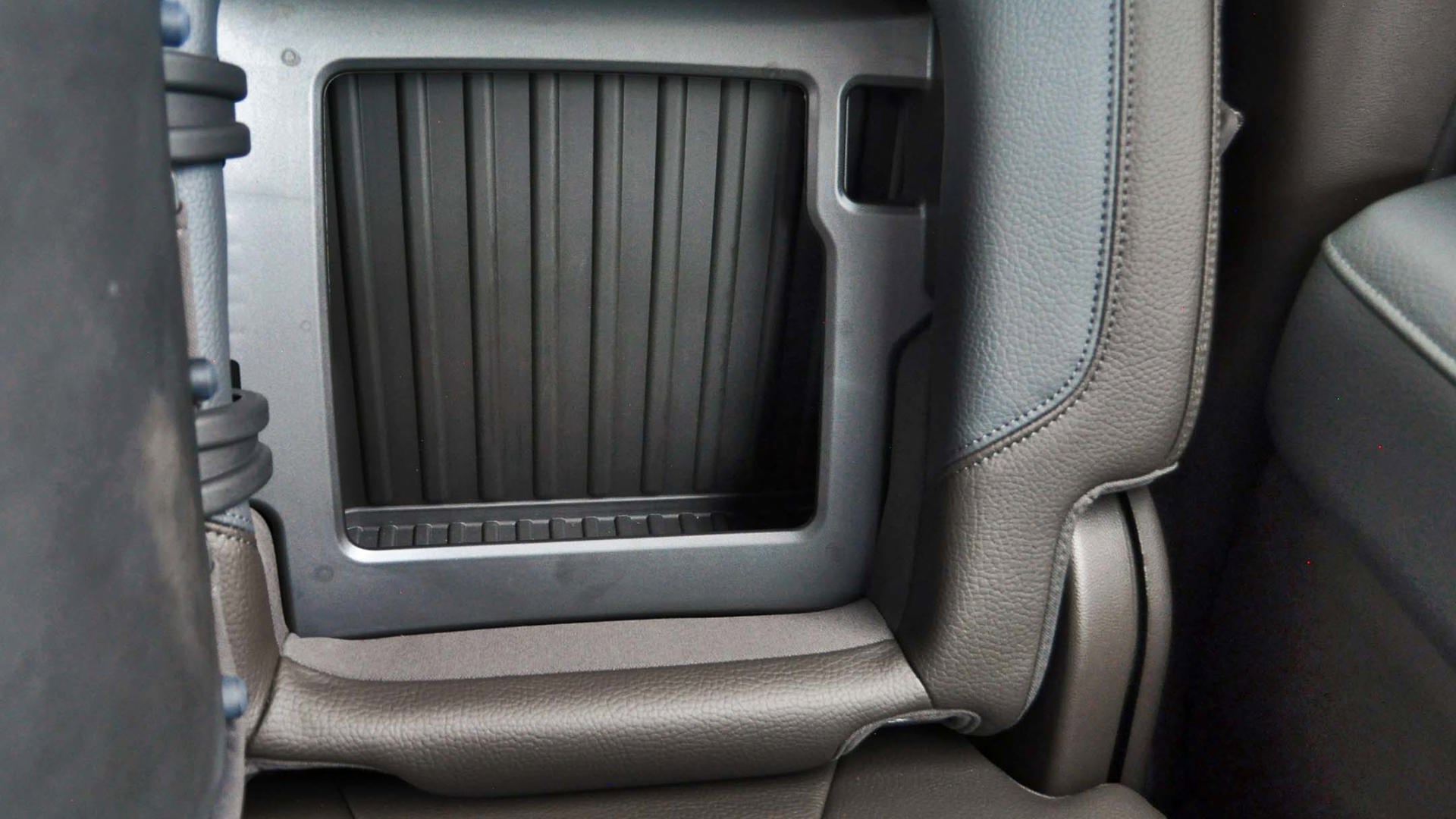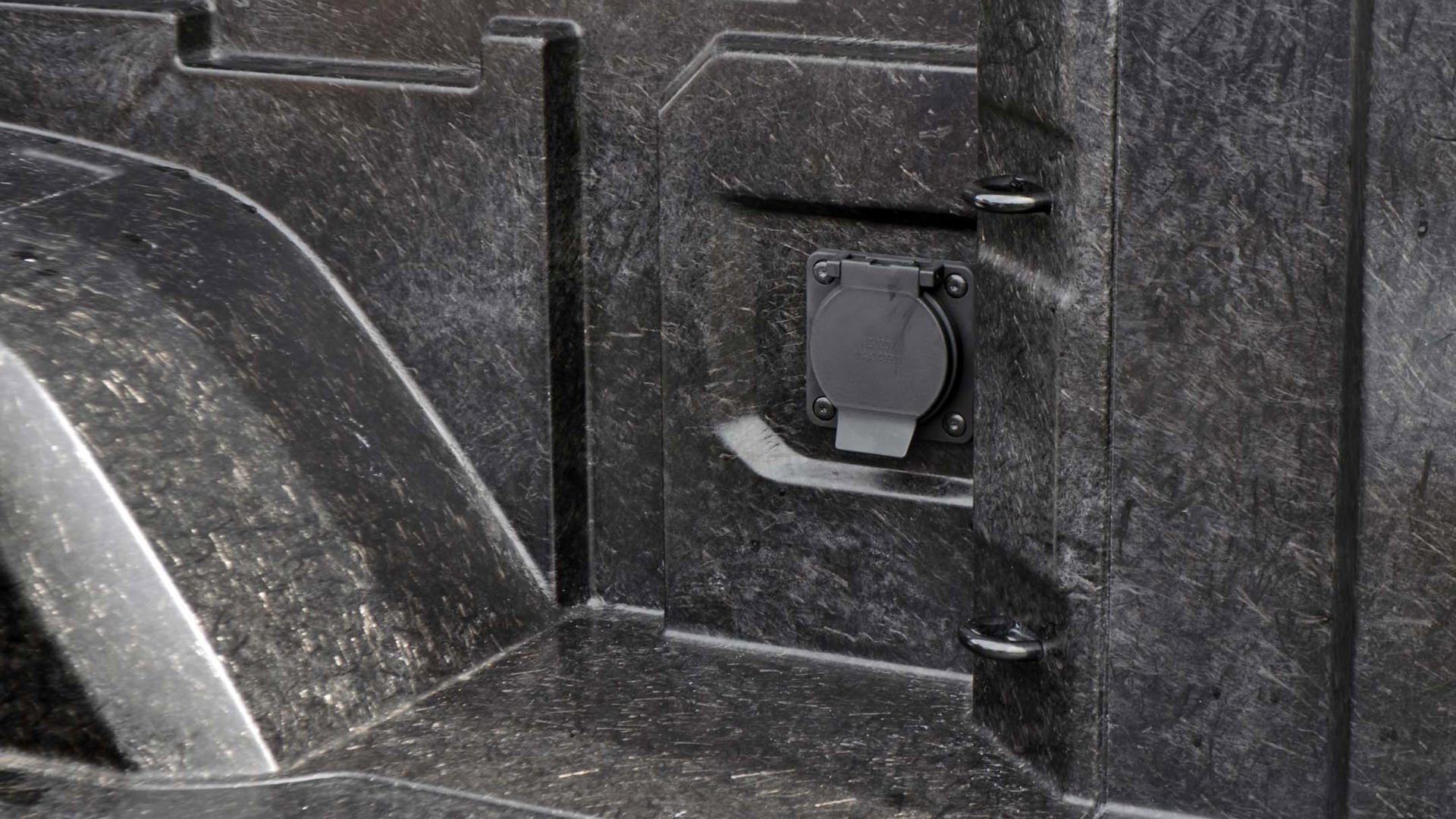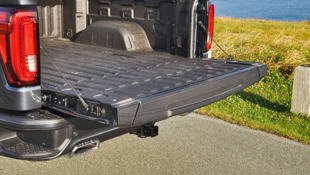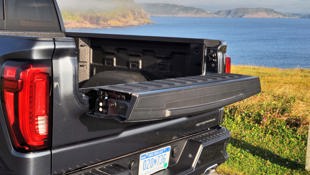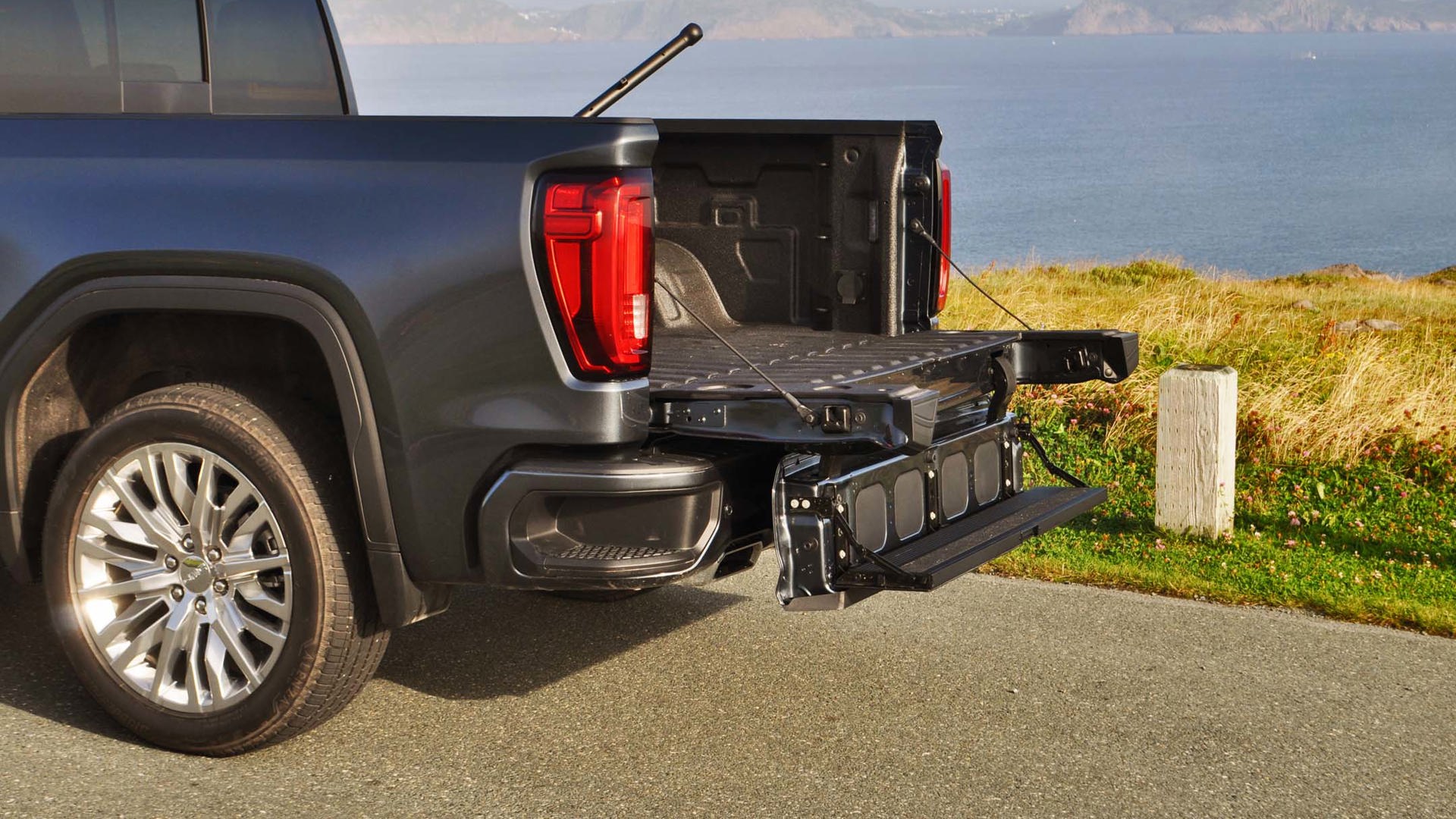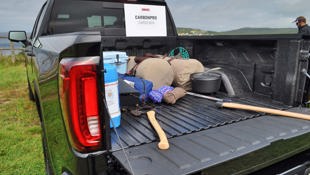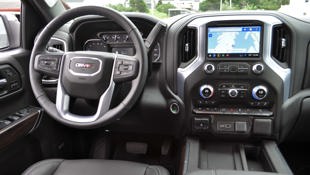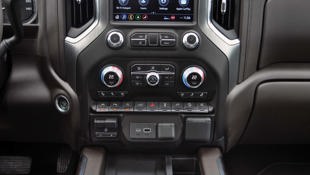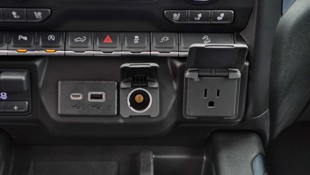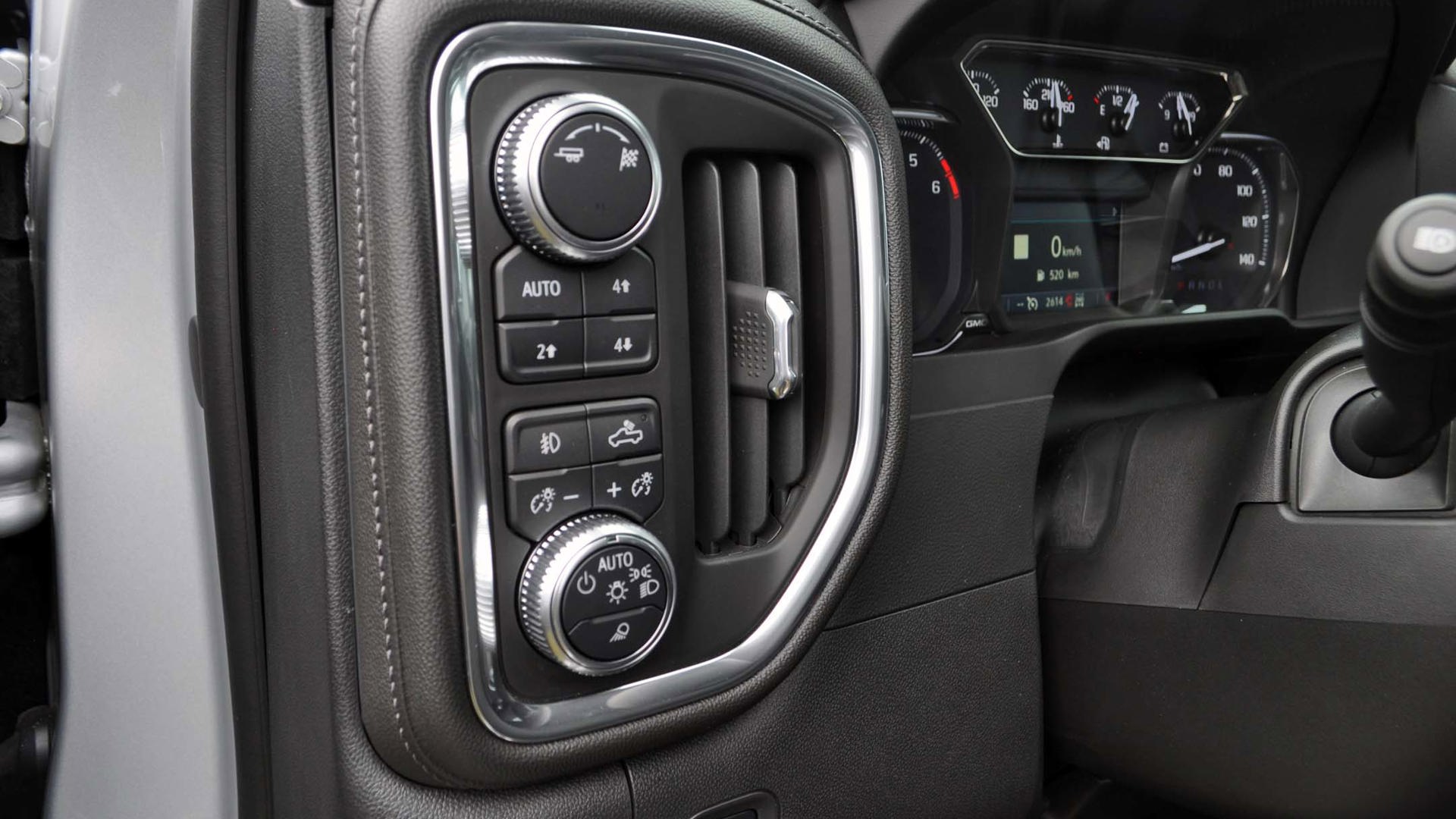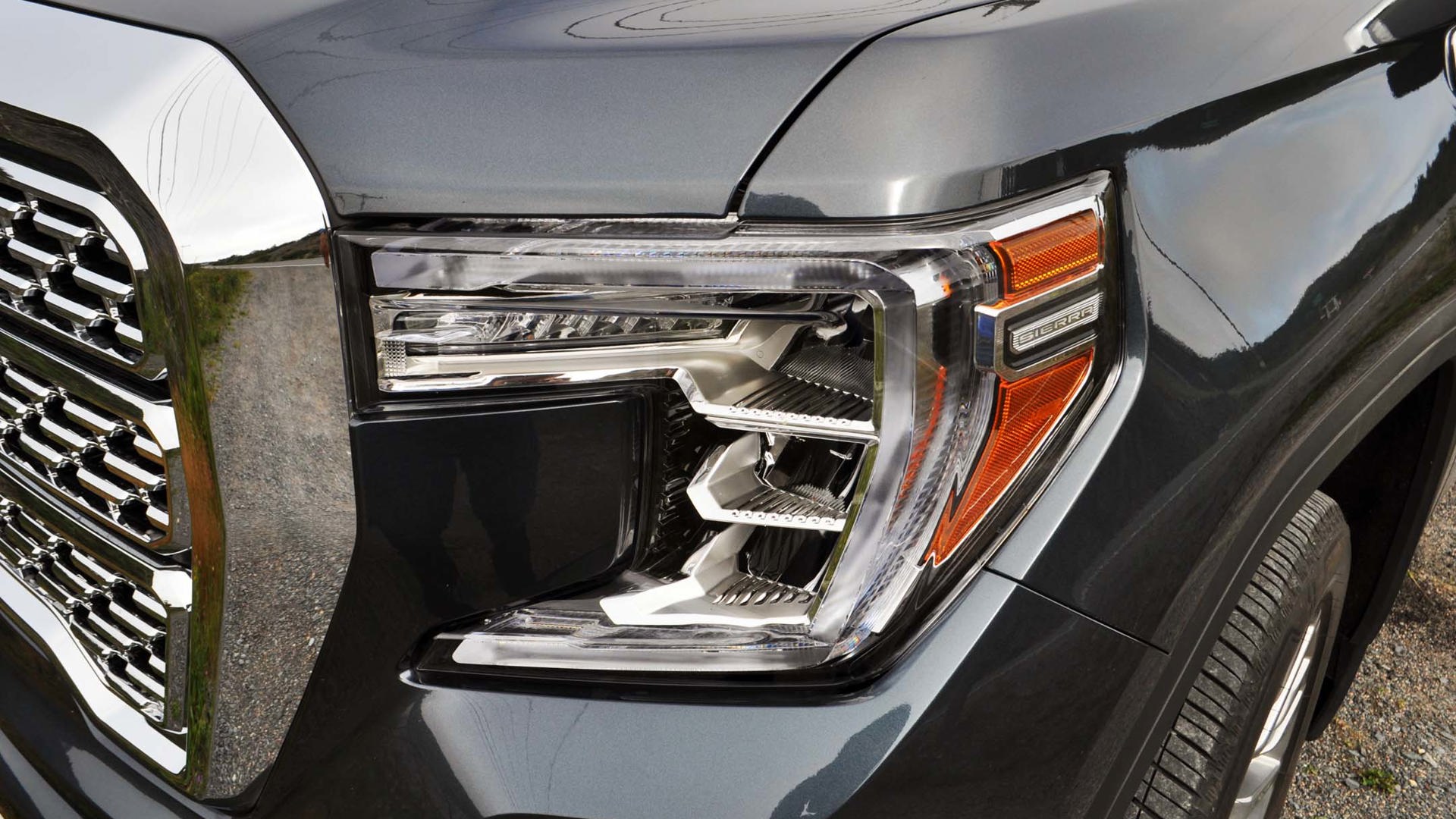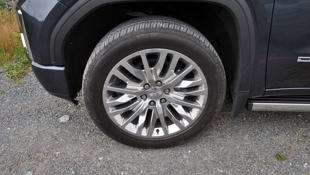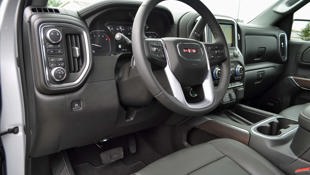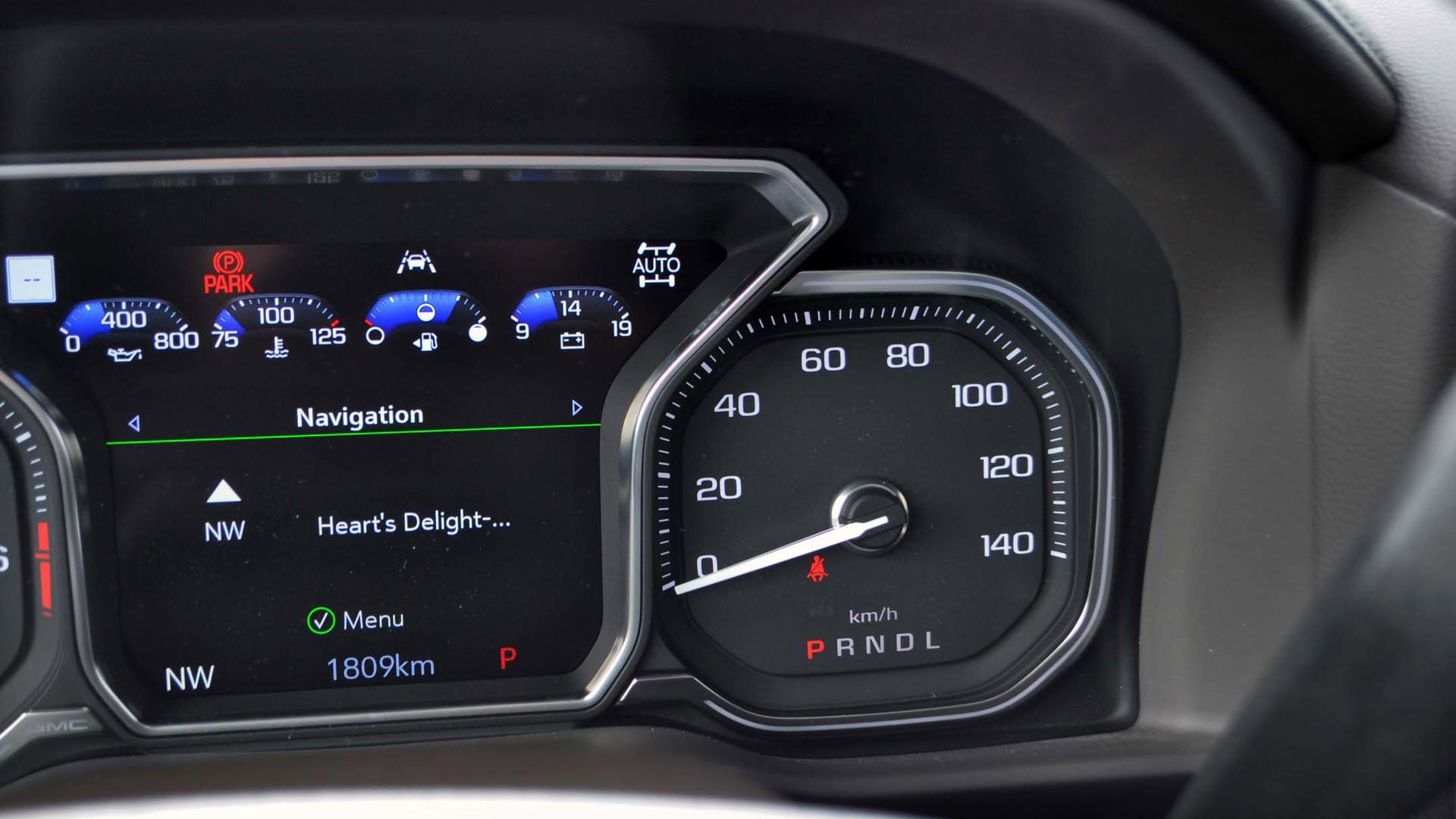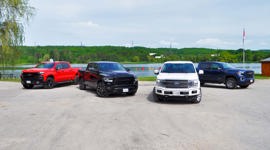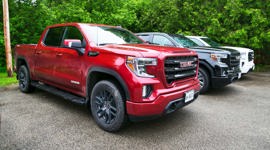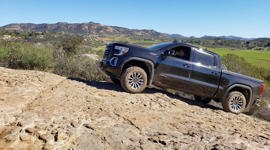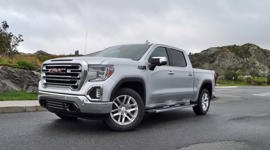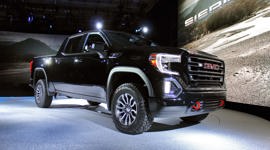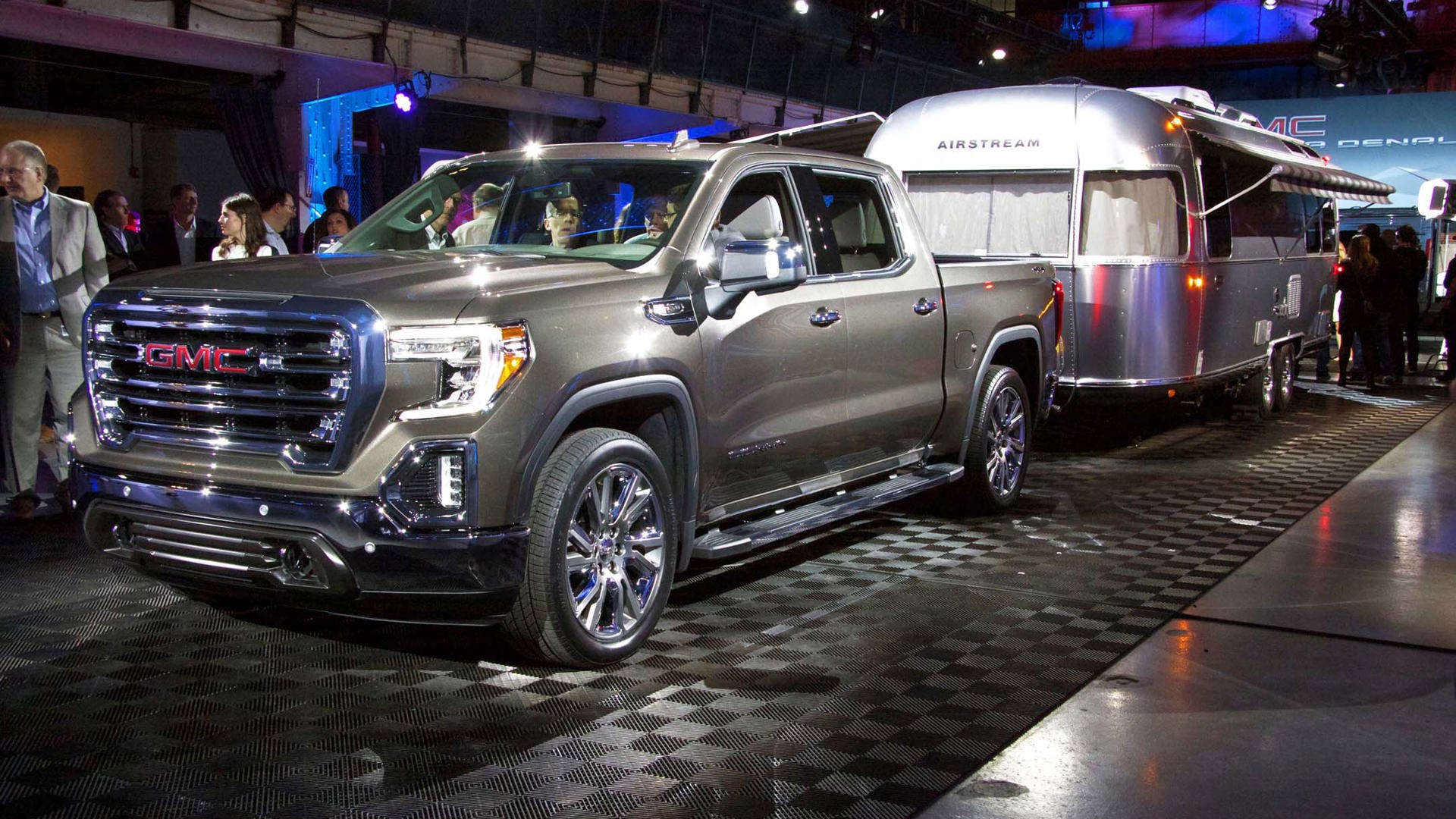ST. JOHN’S, NL – Hot on the heels of the all-new 2019 Chevrolet Silverado, the 2019 GMC Sierra will soon start trickling into Canadian dealerships in late September. And with this new generation, these two popular full-size pickup trucks go from near-identical twins to siblings with very separate lives.
GMC is making a major push towards differentiating its pickups from Chevrolet’s, as well as the rest of the market’s.
While styling cues are part of this increased differentiation, it’s the exclusive GMC box and tailgate options that really set the Sierra apart from the Silverado despite their shared GM DNA – and give the Sierra some unique flexibility compared to other pickups as well.
So let’s start at the back, and go forwards from there.
New MultiPro Tailgate
We drove the 2019 Sierra SLT in and around Cape Spear, Newfoundland, the easternmost point of continental North America, but spent the majority of our time at the international media launch of the Sierra behind the wheel of the luxury-laden, top-line Sierra Denali.
Even the SLT we drove was a fairly well equipped model, as it was four rungs up the six-rung Sierra price ladder, followed by a new off-road-oriented AT4 model that combines extra go-anywhere ability with new-level luxury, with the Denali sitting at the very top. The base, letter-less Sierra starts off the range, followed by SLE and Elevation models.
A highlight of the SLT, Denali, and AT4 models is that they all receive a standard multi-functional tailgate that GM calls the MultiPro Tailgate, which brings a welcome bit of innovation and flexibility to a traditionally conservative segment. This trick, three-part tailgate – the outer gate, the upper-middle “inner gate”, and a “load stop” panel – can be used and re-jigged in a variety of ways:
- As a regular tailgate that can be opened with the key fob, or from inside (similar to the 2019 Silverado);
- with the tailgate down, the full-width “load stop” panel can be lifted up from the end of the tailgate, helping keep longer items in place;
- with the tailgate closed, the inner gate that comprises the top half of the tailgate can be folded down by itself to create a (somewhat bumpy) standing-height work surface;
- from the previous configuration, the “load stop” panel can be raised to create a second, higher tier for longer cargo;
- an “easy access” mode, which allows the owner to step closer to cargo in the box by first opening the tailgate, then dropping the inner gate;
- and what is likely to be its most-prized party trick, the inner tailgate can be converted to a taillight-to-taillight-wide step (rated to hold up to 170 kg / 375 lb) into the truck bed, complete with a foldable handle, simply by folding down the “load stop” panel while in “easy access” mode.
Since GM Canada is still a few weeks away from releasing Canadian pricing on the entire Sierra lineup, it’s still unclear which other Sierra trim levels may receive this MultiPro Tailgate as an option, if any, or how much it will cost.
But we had a chance to sample as well as photograph each mode in action, and there’s no doubt that the added flexibility it offers pickup drivers will be welcome, whether for work or leisure. Depending on its price and popularity, this tailgate could inspire similar innovation in other top-end pickups.
Industry-First Carbon-Fibre Box
Helping set the Sierra Denali apart in terms of the bed is the industry-first carbon-fibre box – take that, aluminum-bodied F-150. Lighter weight, plus stronger dent and rust resistance are the main benefits, according to GM, though it won’t be available until later in the model year, likely into the new year.
A pre-production carbon-fibre box was on display with a traditional, smooth interwoven finish, though it’s likely that production models will receive a more usual spray-on bedliner for hauling purposes, a GM official noted. There will be limited availability even on Denali models, so consider this carbon-fibre box the latest lightweight pickup-truck bling for fancy construction sites, or perhaps construction company owners.
We all see the irony in lightweight carbon fibre offered on a full-size, four-wheel-drive pickup truck, right? One with a base curb weight north of 5,000 lb (2,284 kg all told) versus the 62 lb (28 kg) that a carbon-fibre box saves? A weight savings negated by carrying even an average-sized eight-year-old? On a pickup that offers huge and not-lightweight 22-inch wheels and tires? Great, so let’s move on.
There are other Denali-exclusive features likely to tempt upscale pickup buyers. An Adaptive Ride control system comes standard on the Denali, and really showed itself to provide a much more refined ride on the Denali than on the SLT we sampled. The system offers real-time constant damping adjustments, as well as a load-levelling feature that adjusts the ride automatically with no driver input needed, no matter how much weight is loaded into the box.
Technology-laden inside
At the other end of the pricing spectrum to the Denali, the base Sierra offers regular, double, and crew cab body styles and standard rear-wheel drive, with optional 4WD throughout. There’s an eight-foot box available on regular cabs, though the more consumer-oriented double and crew cabs will come with standard 6'6" box and your choice of shorter 5'8" box or the 6'6" box, respectively.
As with most full-size pickups, the options and variations available will be extensive, eventually. But even at launch, there will be a few signature features that are unique in the segment, outside of the transforming tailgate.
There’s a useful multi-colour head-up display (HUD) standard on every Denali and optional in other trims, plus GM’s latest generation of high-tech inside mirror, which can use a camera mounted on the middle of the outside of the cab to project what’s behind you. This is especially useful when there are folks with big heads sitting in the back seat.
GMC’s new ProGrade Trailering system combines new hitch-specific views in the back-up camera, with dynamic guidance lines on the hitch itself. In-vehicle trailering checklists and systems checks are available right on screen inside, or you can use an app on your phone to remotely check trailer brake lights and turn signals, without needing the help of another person.
Plus there’s even an available auxiliary camera that you can connect to the trailer yourself, and which can show the back of the trailer on the screen upfront. It even automatically applies the parking brake instantly when shifting into Park, avoiding that troublesome bit of movement that sometimes occurs when parking on an incline and lining up the trailer hitch.
Higher Efficiency to Arrive After Launch
Keeping our back to front momentum going, there’s less innovation on the drivetrain side of this latest GMC Sierra, at least at launch. A 355 hp 5.3-litre V8 with an eight-speed automatic or the 420 hp 6.2 V8 will now be able to vary the number of cylinders it uses from all eight down to two, compared to the possible eight or four previously. The 6.2-litre V8 will also receive a new 10-speed automatic, and 460 lb-ft of torque, power numbers equal to those of the current Cadillac Escalade.
The official fuel consumption numbers are 15.3 L/100 km city and 11.2 highway for 4WD versions of the 5.3L Sierra, while the 6.2L V8 sees 15.5 L/100 km city and 11.9 highway.
All of these figures are somewhat higher for the off-road-oriented Sierra AT4, likely owing to that luxury model’s two-inch-taller height, unique all-terrain tires, and likely heavier curb weight due to skid plates and other extra protection.
Fuel savings will be a bit more notable soon after launch, when the 2.7-litre turbocharged four arrives closer to the end of 2018. No official fuel economy numbers are available on it or the upcoming 3.0-litre inline-six diesel slated to arrive in 2019 as a 2020 model, but the 2.7L turbo four will offer 310 hp and 348 lb-ft of torque, as well as the ability to deactivate half its cylinders.
There was lots of big, burly power in both engines, even when we sampled it with a large ATV in the bed. The 6.2 V8 will be available in both the Sierra Denali as well as the SLT, meaning folks who don’t need or want all the toys can still trailer up to 12,200 lb (5,533 kg). But for most folks, the regular 5.3 V8 will offer plenty of grunt for their needs, even if it’s not the smoothest operator, though we sampled it in the SLT, which likely had less sound-deadening than the 6.2L Sierra Denali we also drove.
Staking Unique Ground
Though the F-150 has been Canada’s bestselling vehicle for over half a century, GM Canada officials like to point out that the Sierra and Silverado’s combined sales totals surpass the Ford F-150’s in Canada regularly, in a market that’s the third-largest segment in the country. That said, GMC is making a major push towards differentiating its pickups from Chevrolet’s, as well as the rest of the market’s, with the goal of driving those sales numbers ever higher.
Taking all this into account, the 2019 GMC Sierra is certainly now capable of matching the highest levels of comfort, spaciousness, and technology amongst full-size pickups. Even with all-new Silverado and Ram 1500 models also available for 2019, and the continually evolving F-150 as well, the Sierra now deserves its own, separate stop when planning test drives in this market.
Pricing will be key, as always, but keep in mind that the current-generation Sierra and Silverado models will also be available for the 2019 model year, and possibly beyond. These trucks may not have all the latest technology or the transforming tailgate, but they’re built in Oshawa, and may provide de facto value at your local GM pickup store.
